Are you looking to work more sustainably, perhaps using recycled or discarded materials? Or might you be interested in incorporating historical fabrics and their stories into your art? Maybe you want to raise awareness about environmental concerns through your work?
Textile artists are increasingly focusing on environmental issues and the need for sustainable practices when creating their art. They’re intent upon using repurposed and pre-loved materials that have been discarded or found. And the more unconventional, the better.
We’d like to introduce you to five amazing artists who literally turn trash into treasure in remarkable ways. From vintage fabrics to industrial waste, all these artists create with love and respect for their unusually sourced materials.
Zwia Lipkin is drawn to upcycled home décor textiles, while Ruth Singer has a passion for vintage fabrics. Elnaz Yazdani is inspired by industrial materials and even has a close relationship with a car parts dealer. Vanessa Barragão transforms waste from the Portuguese textile industry, and Julie Peppito has a unique approach when it comes to old toys, litter and other found items.
Find out what drives and inspires these artists, and gain some great ideas and tips for recycling materials in your own artwork along the way!.
Zwia Lipkin
Upcycled upholstery
Zwia Lipkin has always been drawn to old and weathered surfaces and items that have a past story. In high school, she created assemblages with found objects and wrote her senior thesis about the use of trash in modern art. As a historian, she sought to give voice to the underclasses and people discarded by society. So, when Zwia returned to making art, it was only natural to pick up where she left off by using upcycled materials.
Zwia lives near an amazing non-profit organisation in California called FabMo, which saves upholstery showroom samples and makes them available to the public. She fell in love with these home décor textiles and soon started working with them. The more she learned about the textile industry and the general waste problem facing our planet, the more committed she became to using only upcycled fabrics in her work.
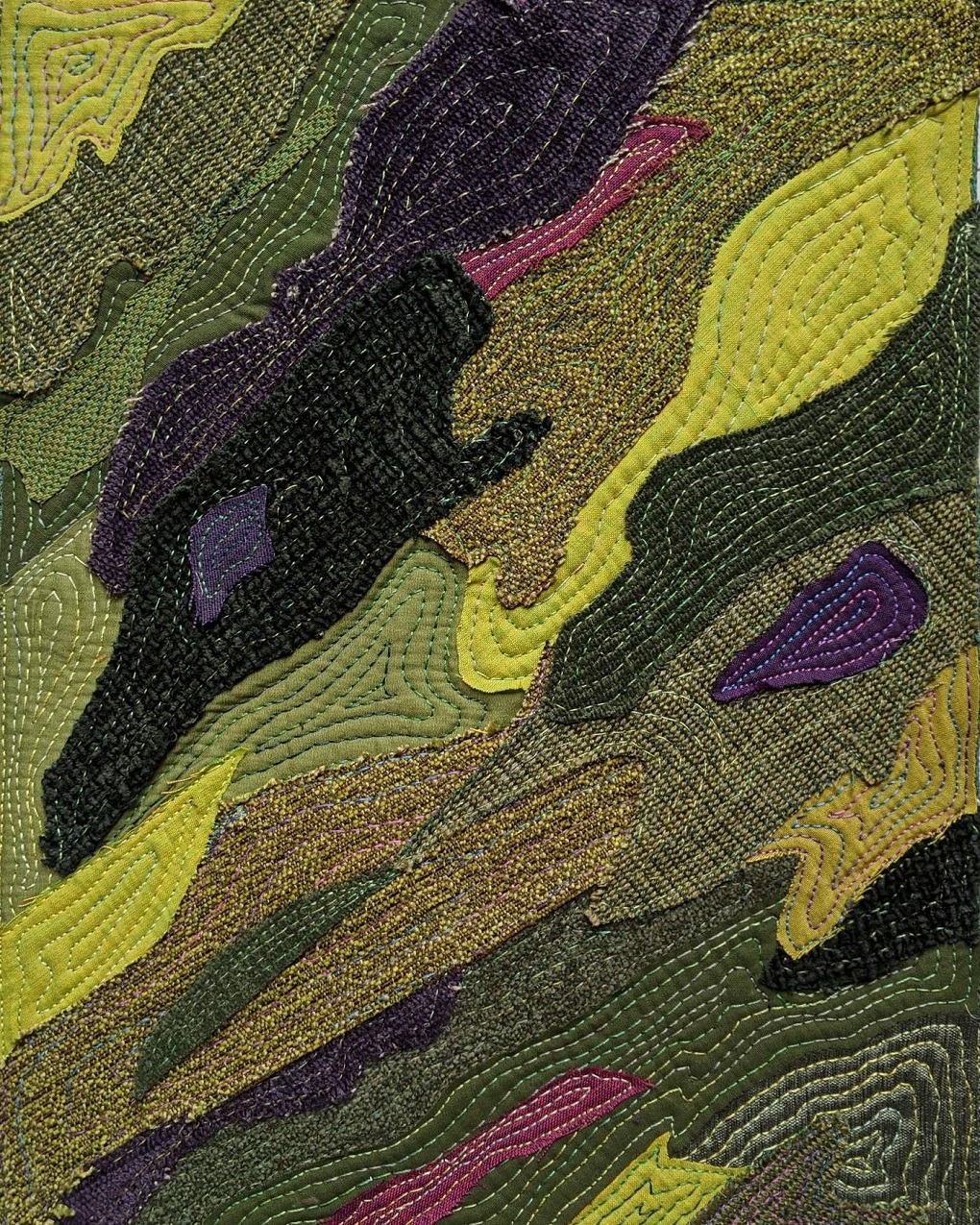
Zwia takes her inspiration from nature, travel and world events. The rescued home décor textiles she uses are luscious and tactile, so sometimes the fabrics themselves dictate the outcome. At other times, an idea comes first and then she selects suitable fabrics. She enjoys making abstract work, but also incorporates figurative elements.
The relationship between different colours and textures is an important part of Zwia’s work. Her textiles are thick, so she raw-edge appliqués them directly onto batting using her sewing machine. She then combines this with touches of hand stitching in a Sashiko style.
Her materials mostly come from FabMo, but she has also amassed a large stash of fabrics from her relatives. Some of her most personally meaningful work was made using family materials. Every now and then, friends and neighbours also give Zwia textiles they no longer want, allowing her to exclusively use upcycled fabrics. Her bulging scrap boxes are an endless source of inspiration.
Zwia is committed to using recycled materials in her work, and she hopes to not only use them as a statement, but to also touch upon environmental issues directly.
‘I encourage other people to reduce their consumption and upcycle. Every little effort counts! Our planet currently faces great challenges, mostly because of human short-sightedness and an insatiable greed for things and resources. The problems of waste and plastic pollution are significant and contribute to the existential issue of global warming.’
Zwia’s advice for exploring recycling is to find gorgeous pre-loved fabrics that excite you. Look for used textiles that inspire you in ways that new materials can’t. Perhaps they bear a print no longer available. Or they show interesting visible signs of wear that can add texture to your work.
Search for organisations that collect used and unwanted textiles. You can also sort through your own old clothes, or ask family and friends for their unwanted textiles. Thrift and charity shops are also good resources.
Anything you can make out of new fabric can also be made with recycled cloth, and the possibilities are endless! The best inspiration often comes from playing around with scraps.
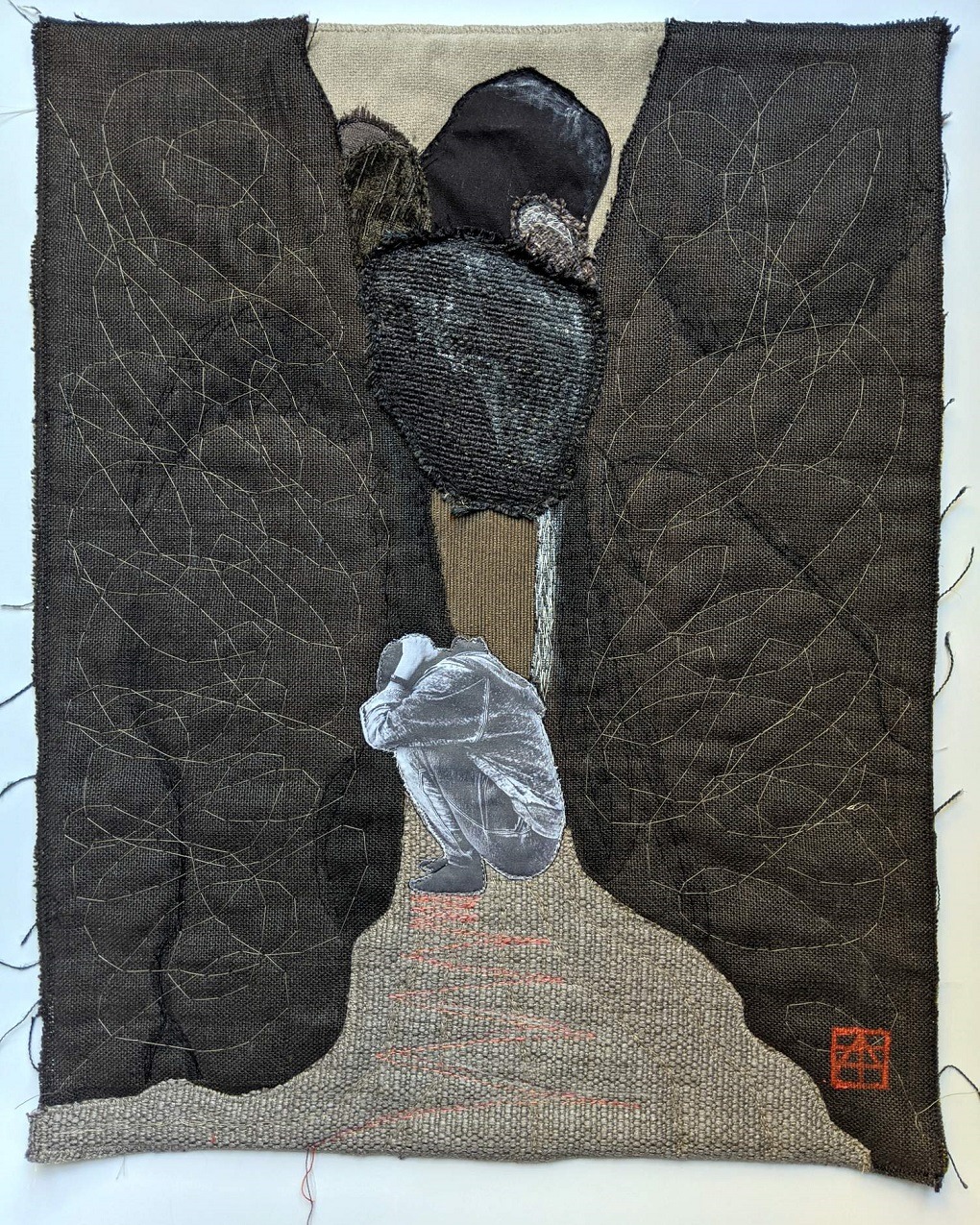
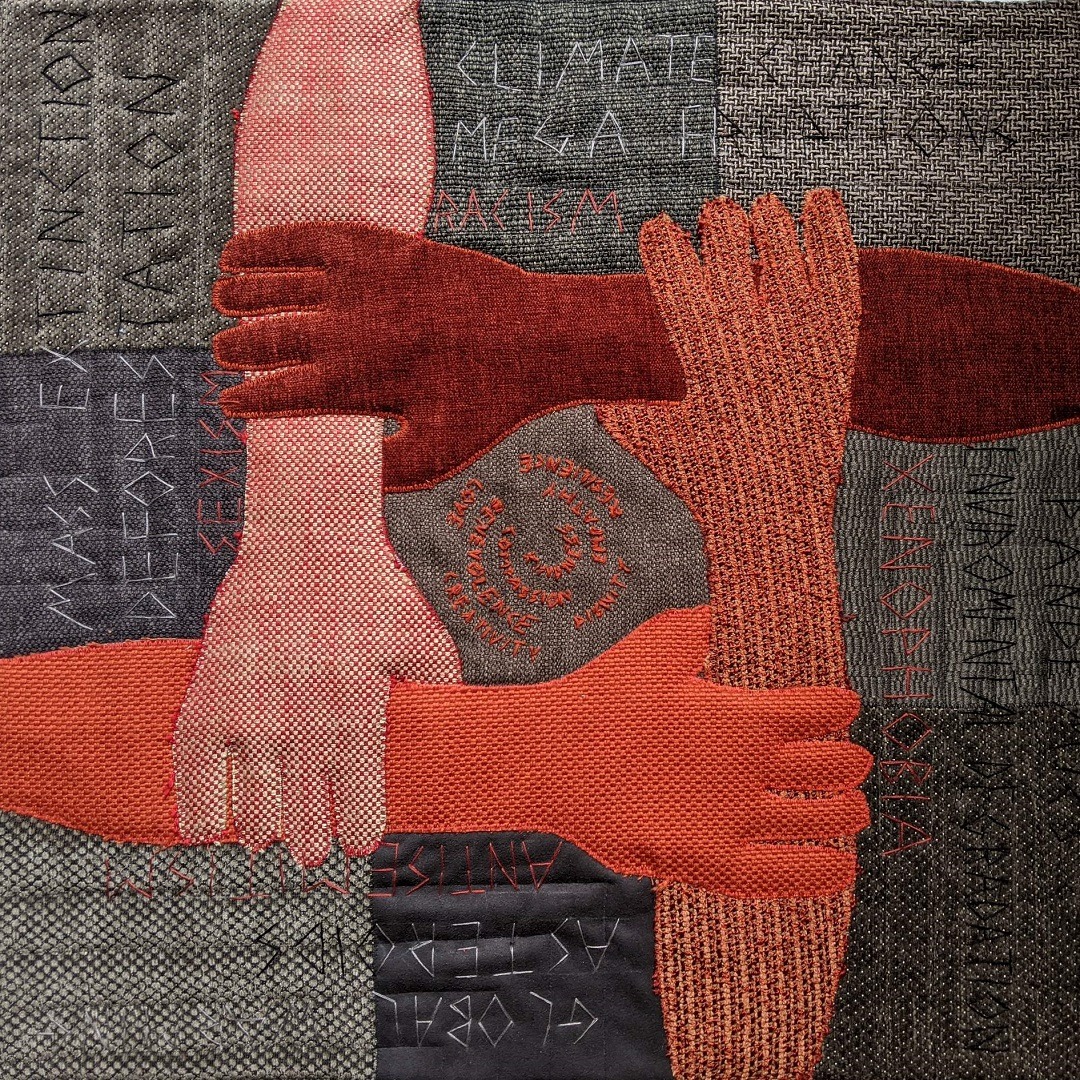
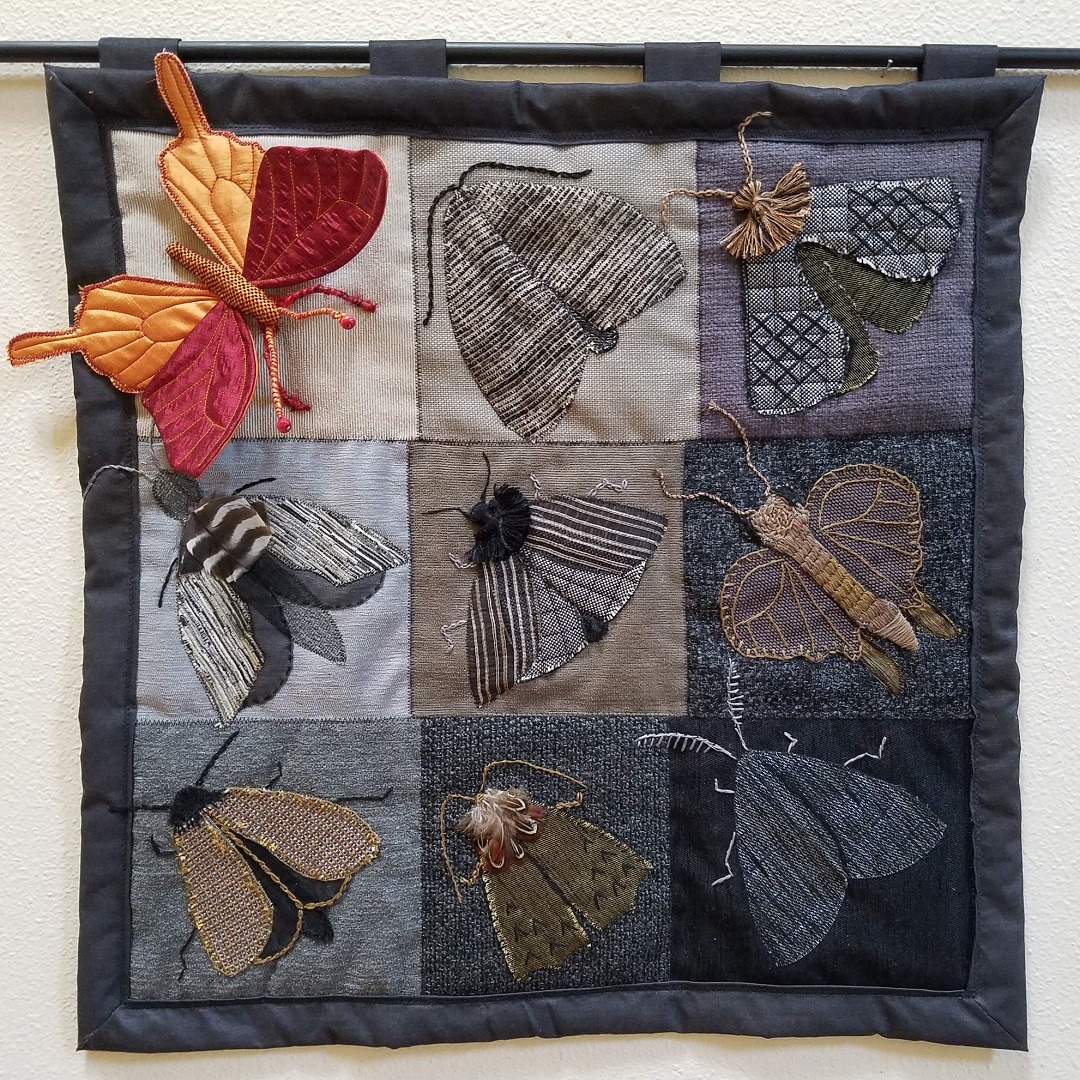
California-based artist Zwia Lipkin grew up in Israel where she attended a high school for the arts and received a BA in Art History and East Asian Studies. She then took a long break from art to pursue a PhD at Stanford and then to raise a family. When she finally returned to art practice, she chose textiles as her main medium. She’s taken a handful of quilting classes, but she mostly teaches herself through experimentation and practice.
Website: www.anytexture.com
Instagram: @anytexture
Facebook: facebook.com/ANYTexture
Ruth Singer
Vintage viewpoint
Ruth Singer’s affinity for old textiles started when she was child. And her first career working in museums gave her an enduring passion for historic textiles. So, when she began to develop her own work, Ruth turned to vintage fabrics and eco textiles to make repeatable products. From there, she moved to making one-off pieces using old textiles whose marks, darns, stains and tears became part of her art’s narrative.
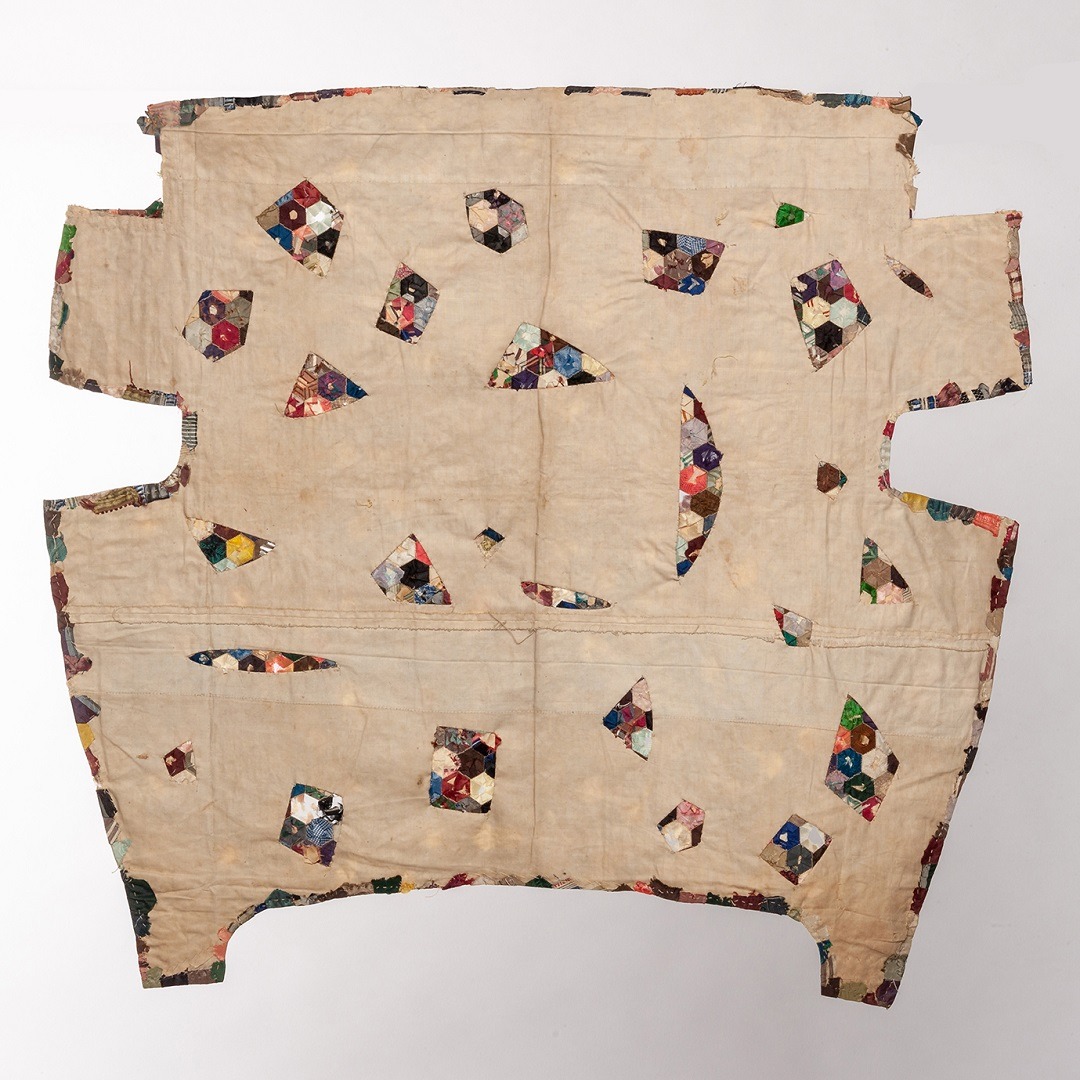
Ruth conducts extensive research to create textile art that tells stories with complex meanings. So, it can take a while to match up a concept she wants to explore with the cloth in her stash. Her studio is full of old textiles, some of which she refuses to cut up because they’re so old and precious.
Ruth uses a lot of 1930s linens from her grandparents, as well as damaged and decaying Victorian clothing, quilts and church textiles. She also hunts out supplies from specialist antique textile dealers, buying things that catch her eye, even though she might not find a use for it until much later.
‘My work is usually very subtle and delicate, with little interventions into the cloth itself, so it can sometimes be mistaken for a museum piece. This kind of fragile cloth is integral to my work, and although I use other materials for certain projects, old cloth will always be my first choice. I have a lot to use up!’
Ruth believes using old textiles is the best way to bring instant meaning and depth to your work. It’s also a great way to be more sustainable in your use of materials. Old quilts make a wonderful base for appliqué and embroidery. Old tea towels and dusters are also soft and easy to stitch upon. And vintage family fabrics can be especially meaningful and powerful. But if they’re too precious to use, beautiful old textiles can be sourced on eBay and at antique fairs.
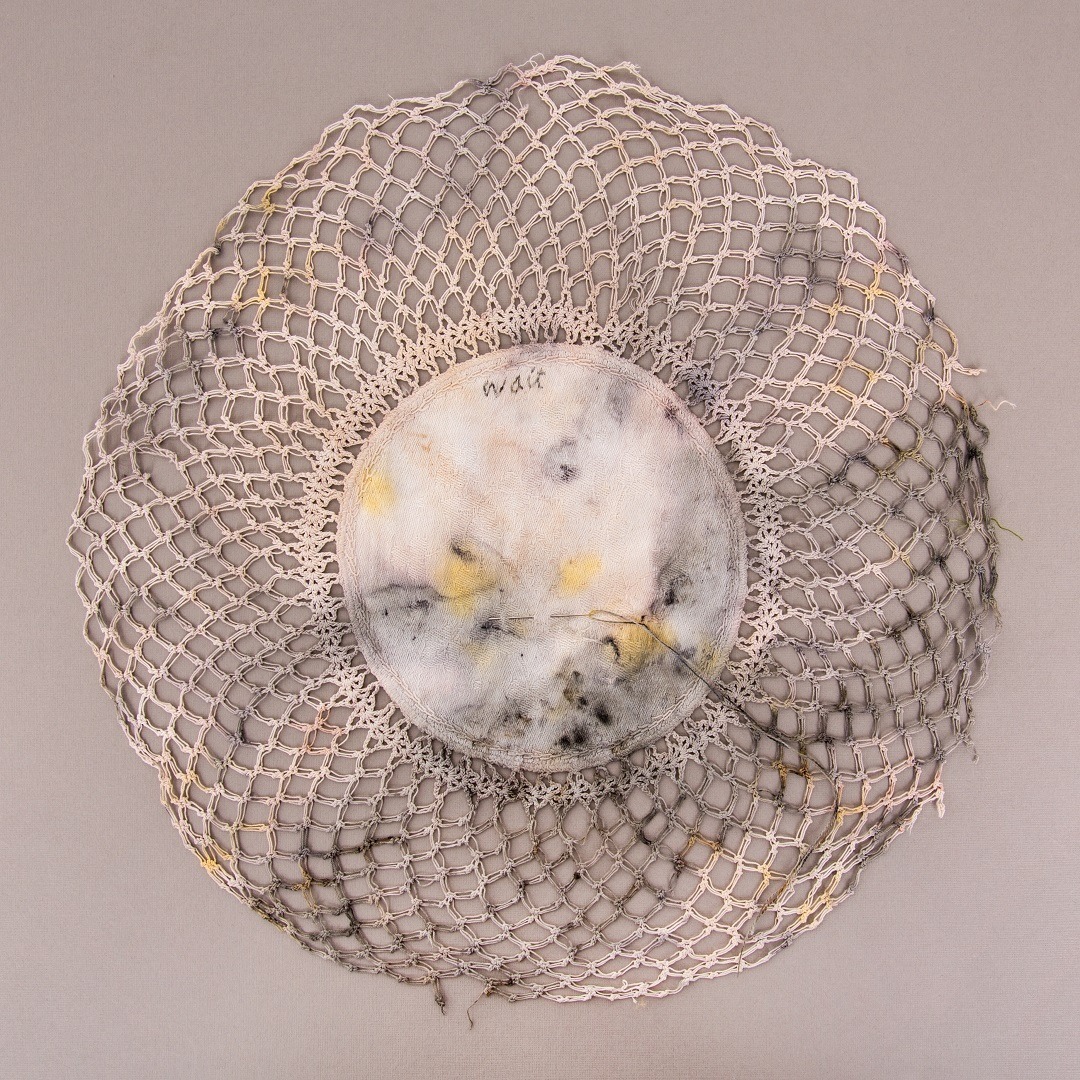
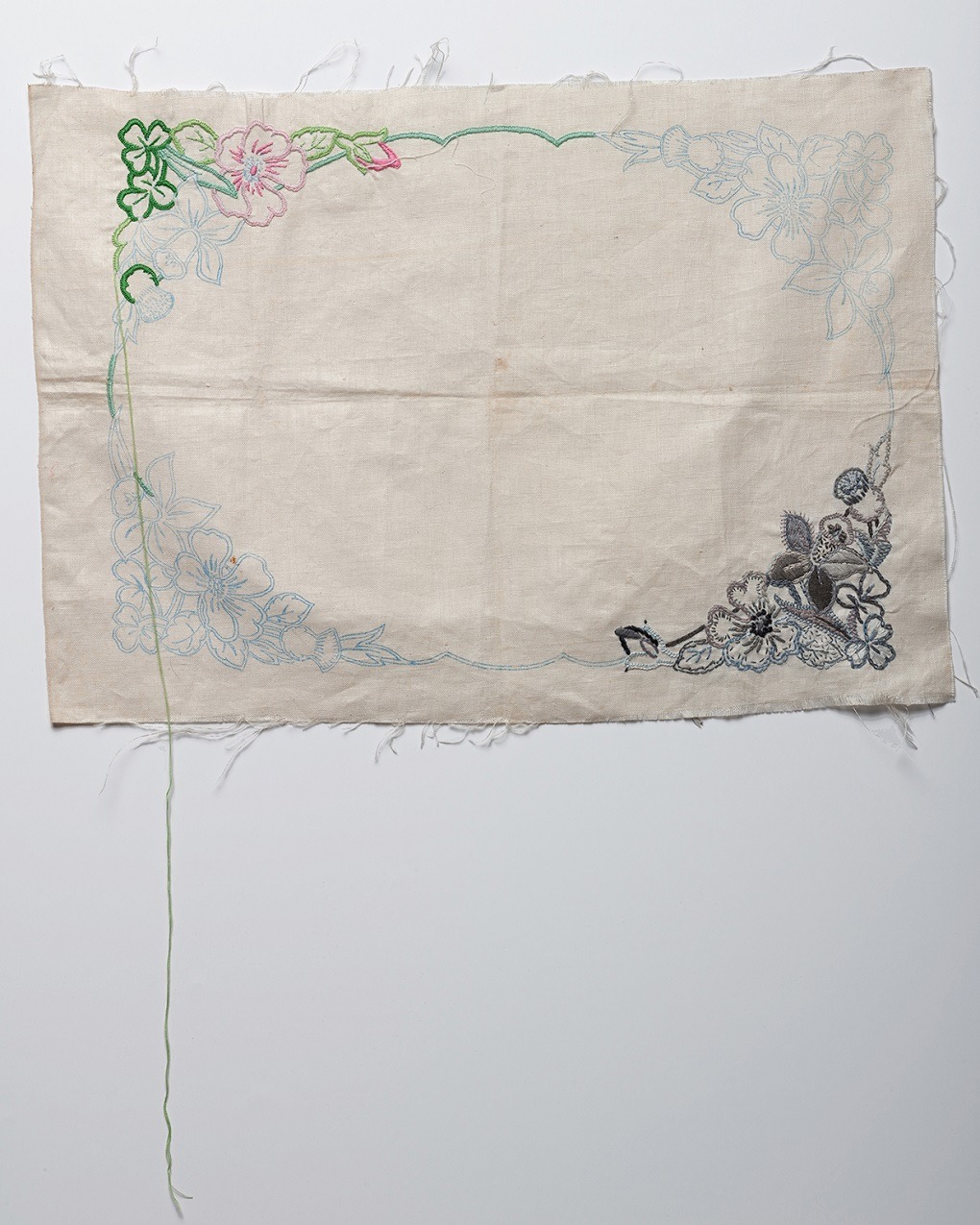
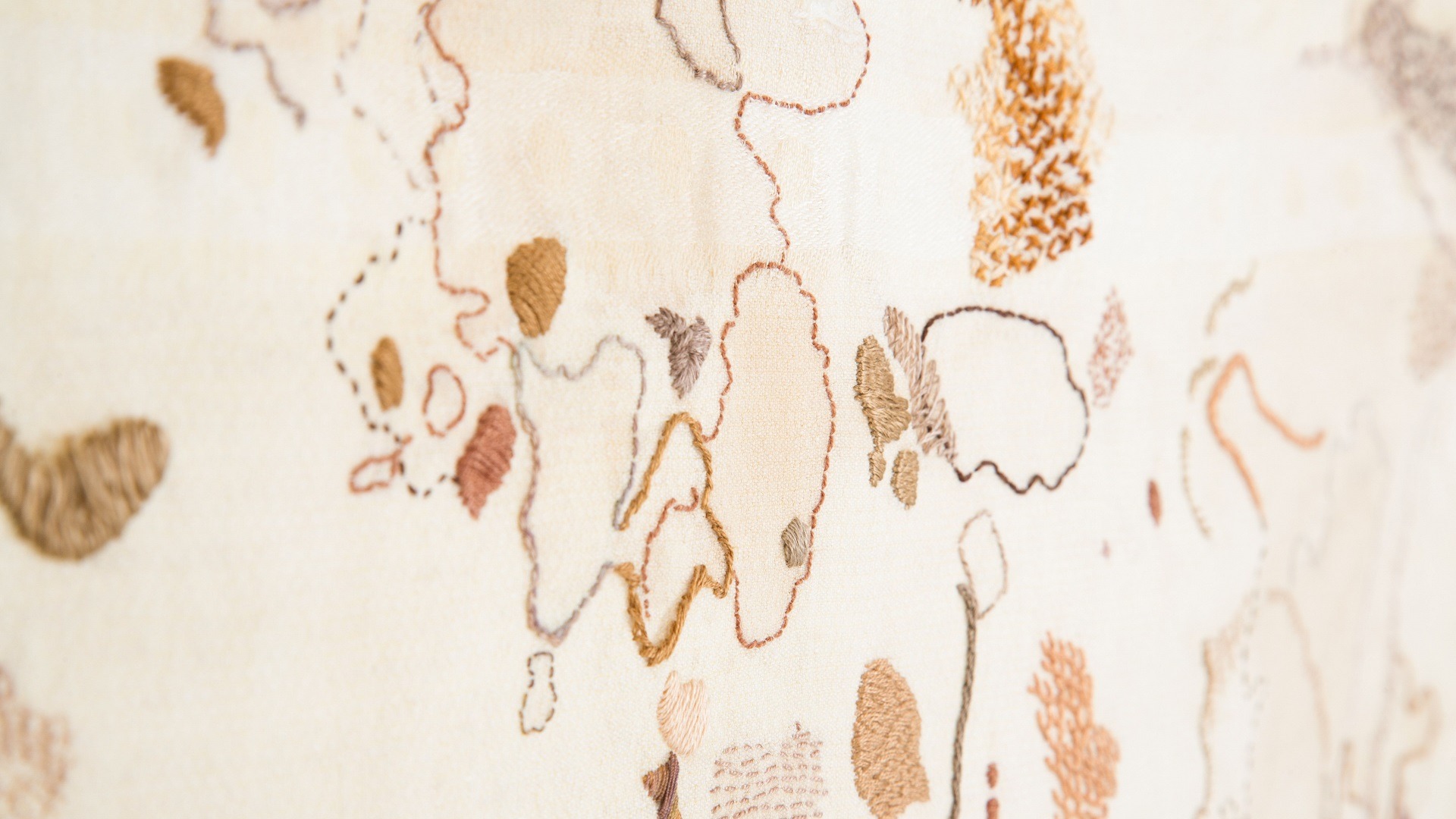
Ruth Singer is based in Leicester, UK. She has exhibited her work far and wide, most recently at Llantarman Grange in Cwmbran (2022). Ruth has also authored many books, including Fabric Manipulation, and she regularly runs online workshops. Ruth also works on community projects, residencies and commissions, and she is the Chairperson of the Leicester Society of Artists.
Website: ruthsinger.com
Instagram: @ruthsingertextiles
Facebook: facebook.com/RuthSingertextiles
Elnaz Yazdani
Alchemy in stitch
Elnaz Yazdani first began using found objects and unusual materials during her degree course. She was given a brief called ‘the alchemy of cloth’ which led to her fascination with alchemists and the transformation of materials. She became obsessed with turning ‘the mundane’ into ‘the magnificent’ through stitching. She often finds inspiration and beauty in a range of unconventional materials, and she loves using them in her embroidery projects.
Whether working on large-scale works or pieces of contemporary jewellery, Elnaz likes to incorporate stitch in her work. She spends a large amount of time developing embroidery teaching samples for her costume, fashion and textile students.
The common theme throughout her work is her use of unconventional materials. Each project stems from the materials she chooses to collect. Their colours and shapes influence the outcome and creative process.
Elnaz collects materials from a wide range of places and is always looking for new and alternative supplies. She especially sources waste cutoffs from local factories and manufacturing companies. And she’s developed a good relationship with a car parts supplier, who offers her waste items too small for them to use and otherwise destined for landfill. Her local scrap store is also a favourite source of materials.
‘My visits to the scrap store are inspiring. I let my imagination run wild with all the unusual materials and repurposed items they have for sale. Sometimes, I find it helpful to take a sketchbook along to record my inspirations.’
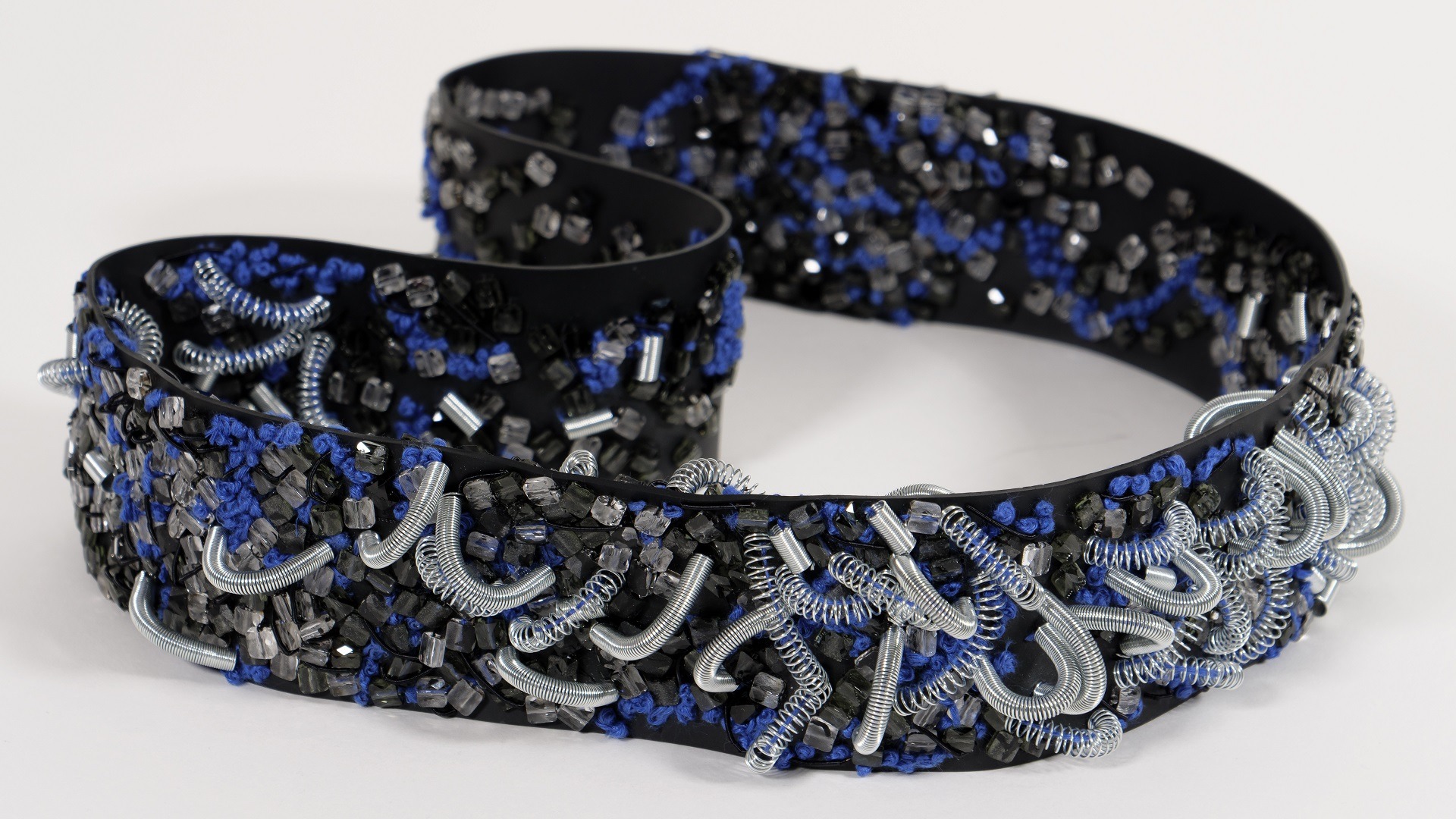
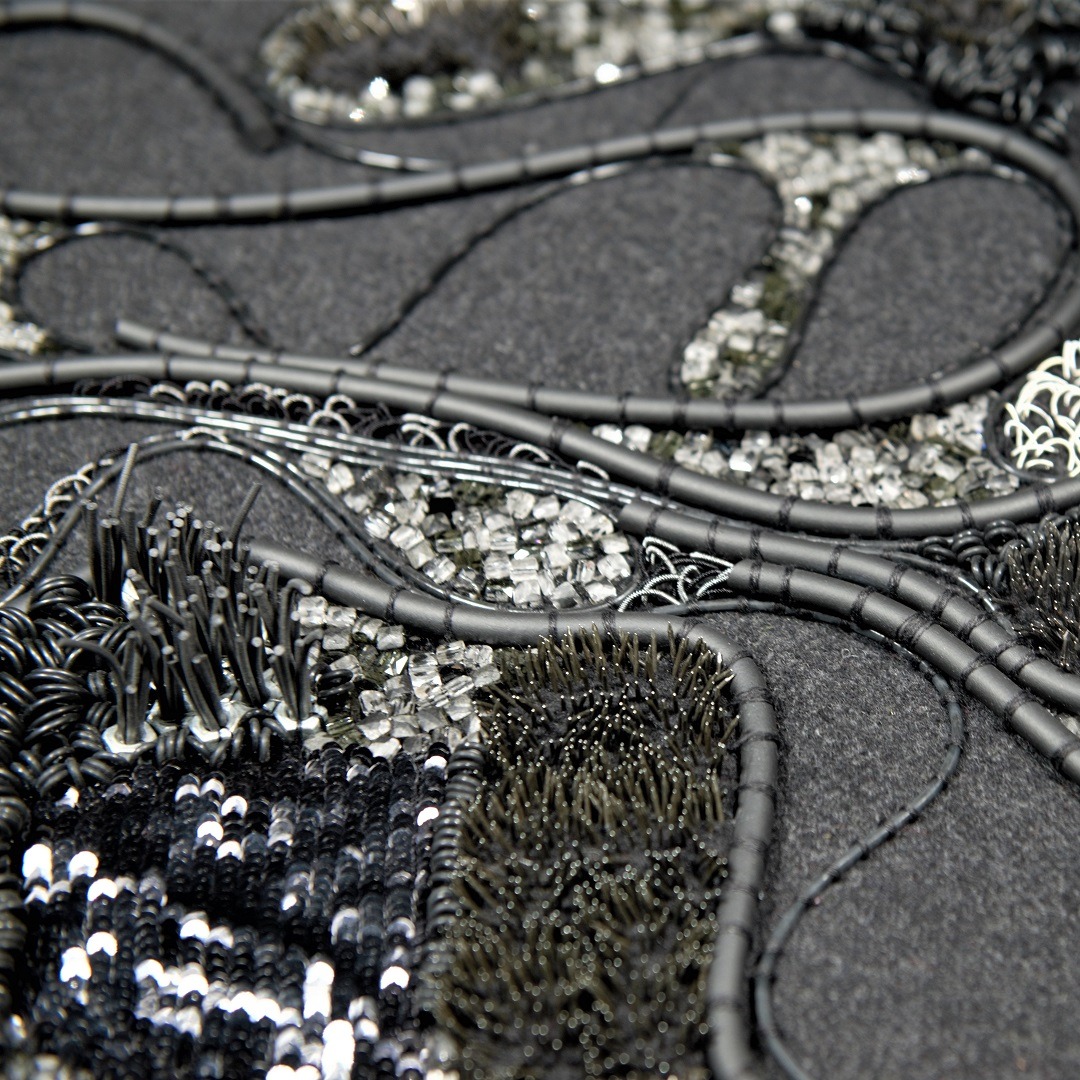
Use of alternative materials often finds Elnaz having to rethink how she teaches traditional embroidery skills. This is especially true when teaching goldwork embroidery. Her classes on alternative and contemporary goldwork are hugely popular, as she turns traditional techniques on their head by introducing obscure or unconventional materials.
Elnaz also likes to encourage her students to challenge their notions of a bead in embroidery. She invites them to reflect upon the nature of beads and where they can be sourced. Then she asks if they could make their own beads. What materials would they use? Would they choose something hollow, cut something up, or break something down?
Making your own beads is a great way to start working with unconventional materials. It will help you see the potential of unusual objects. Then once you have something to work with, grab some fabric, a hoop, needle and thread, and have a go at some alternative embroidery!
During pandemic lockdowns, Elnaz’s obsession with found and unusual materials grew. Of course, she had more time to explore ideas and sort through items collected over time. But the lockdowns also encouraged her to look around her own home and repurpose household waste materials, such as old stationary, game parts or broken wires.
Elnaz also uses her work as a form of escapism, which benefits her mental health. By creating captivating embroidered worlds of repurposed materials, she can lose herself in stitch after a long day of online teaching.
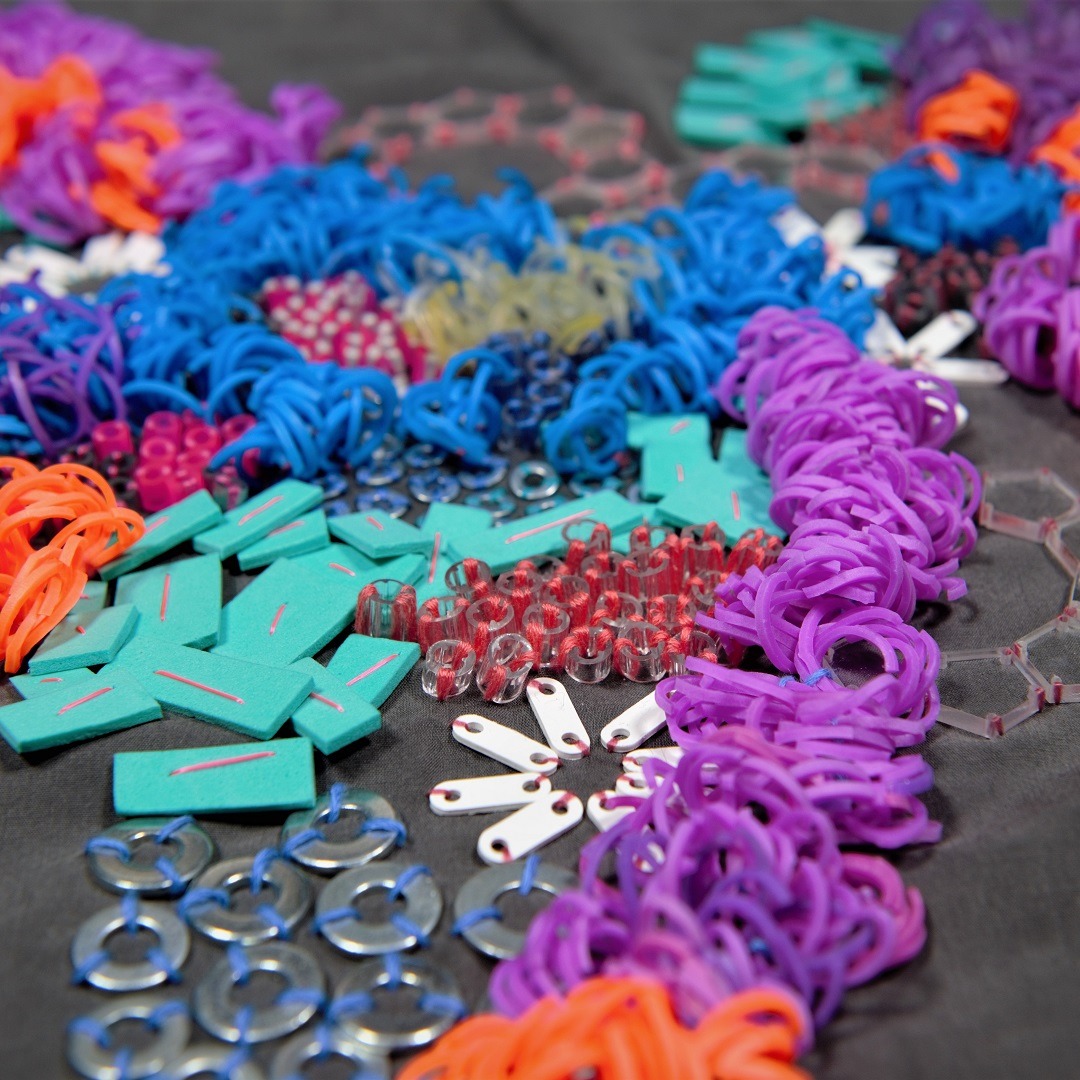
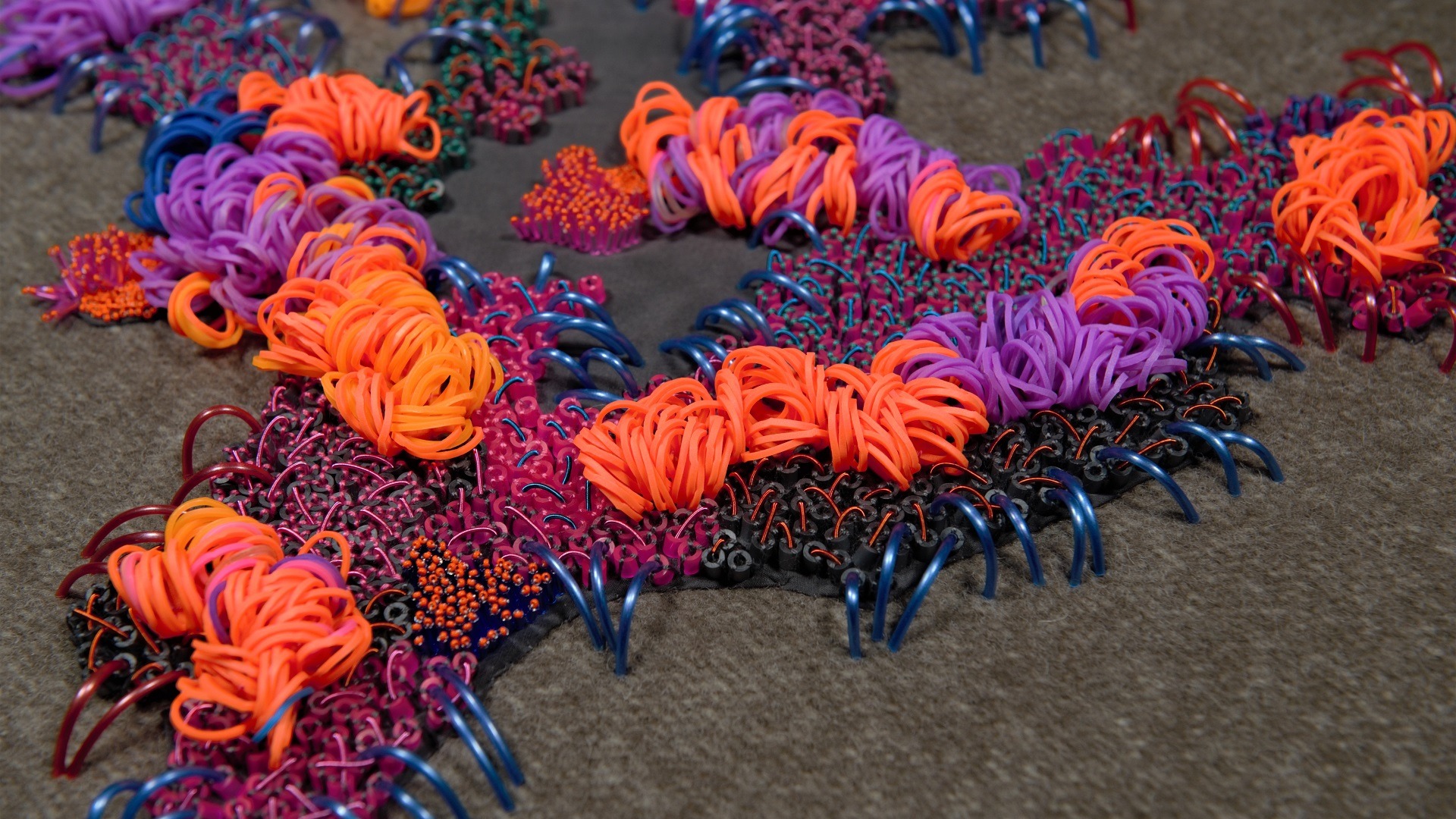
Elnaz Yazdani is an artist and educator based in Yorkshire, UK. She has exhibited her work most recently at the Fashion & Embroidery Show, NEC, Birmingham (2022) and the Bankside Gallery, London (2022). Elnaz was also commended in The Embroiderers’ Guild Beryl Dean Award for Teaching Excellence in Embroidery and Design (2020).
Website: elnazyazdani.com
Instagram: @elnazyazdani
Facebook: facebook.com/elnazyazdanii
Vanessa Barragão
Refashion passion
While at university studying fashion design, Vanessa Barragão learned about the huge amounts of trash produced by the textile industry and its harmful effects on the environment. That’s when she decided to start recycling and repurposing textiles. She worked hard to establish agreements with local Portuguese textile factories, which allow her to collect most of their waste. And she’s always on the lookout for new factories that might also share their waste materials.
‘We have a saying in Portugal: what is trash for some is luxury for others. As creatives, that’s where we need to direct ourselves.’
Vanessa’s techniques are based on traditional artisanal textile practices including latch hook, crochet, felt, weaving, embroidery and macramé. She especially enjoys experimenting with unusual materials, and figuring out new techniques for incorporating them into her work. Each new material poses its own challenge and aesthetic. For example, her tapestry Nostalgia used strips of esparto grass braided into several branches. The grass is traditionally used for basketry, but Vanessa figured out ways to work it into her tapestry. Remarkable!

Once the textiles arrive at Vanessa’s workshop, she washes her chosen materials. She then sorts and catalogues them by colour. Vanessa admits it’s a long process, and the materials do take up a lot of space in her studio. But she finds it rewarding to know all those materials will be repurposed when they would otherwise be thrown away.
Vanessa’s best recycling tip is to take time to determine what is really ‘trash’ and what can be repurposed into something new. Keep an open mind and experiment to see what’s possible.
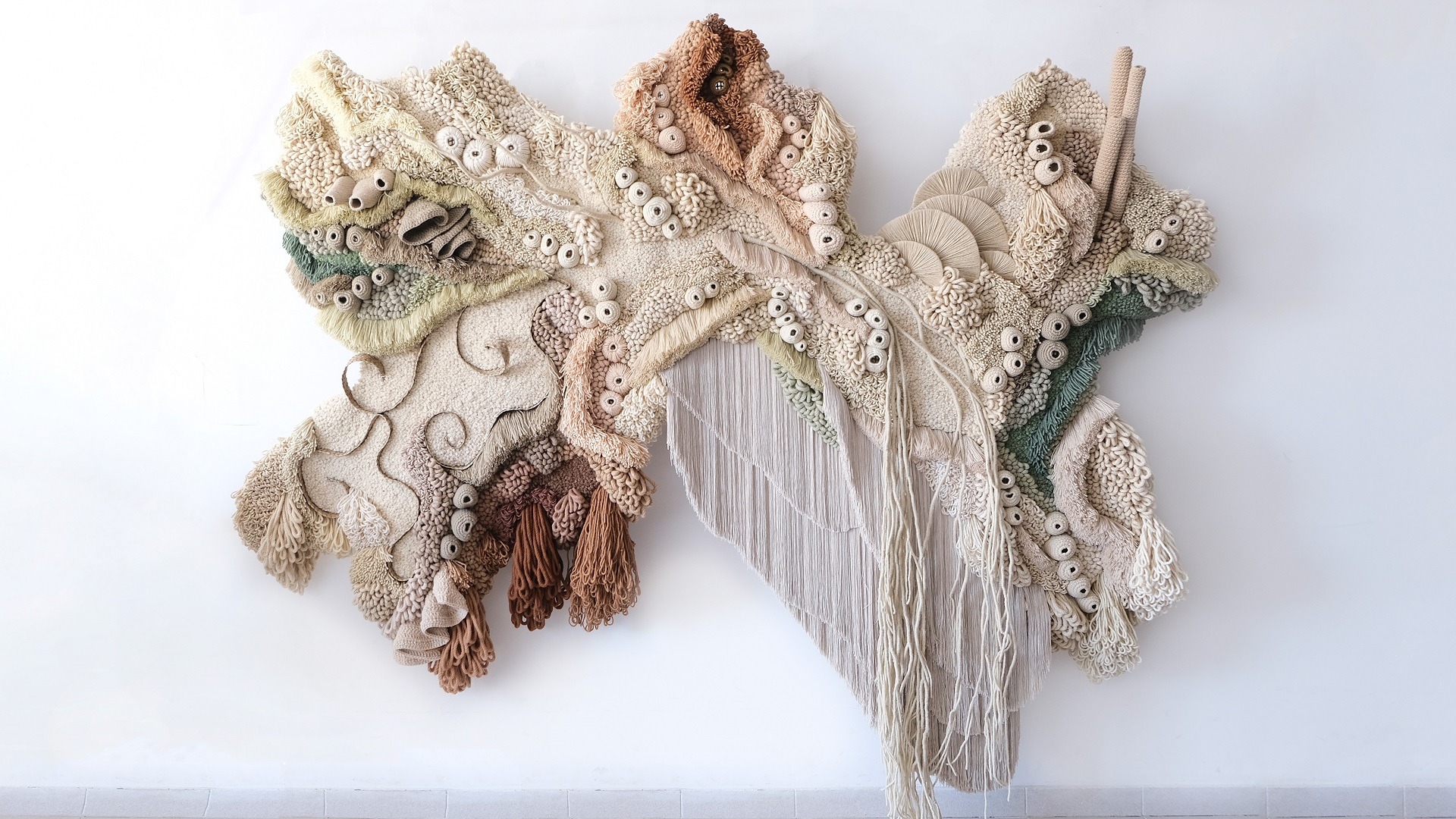

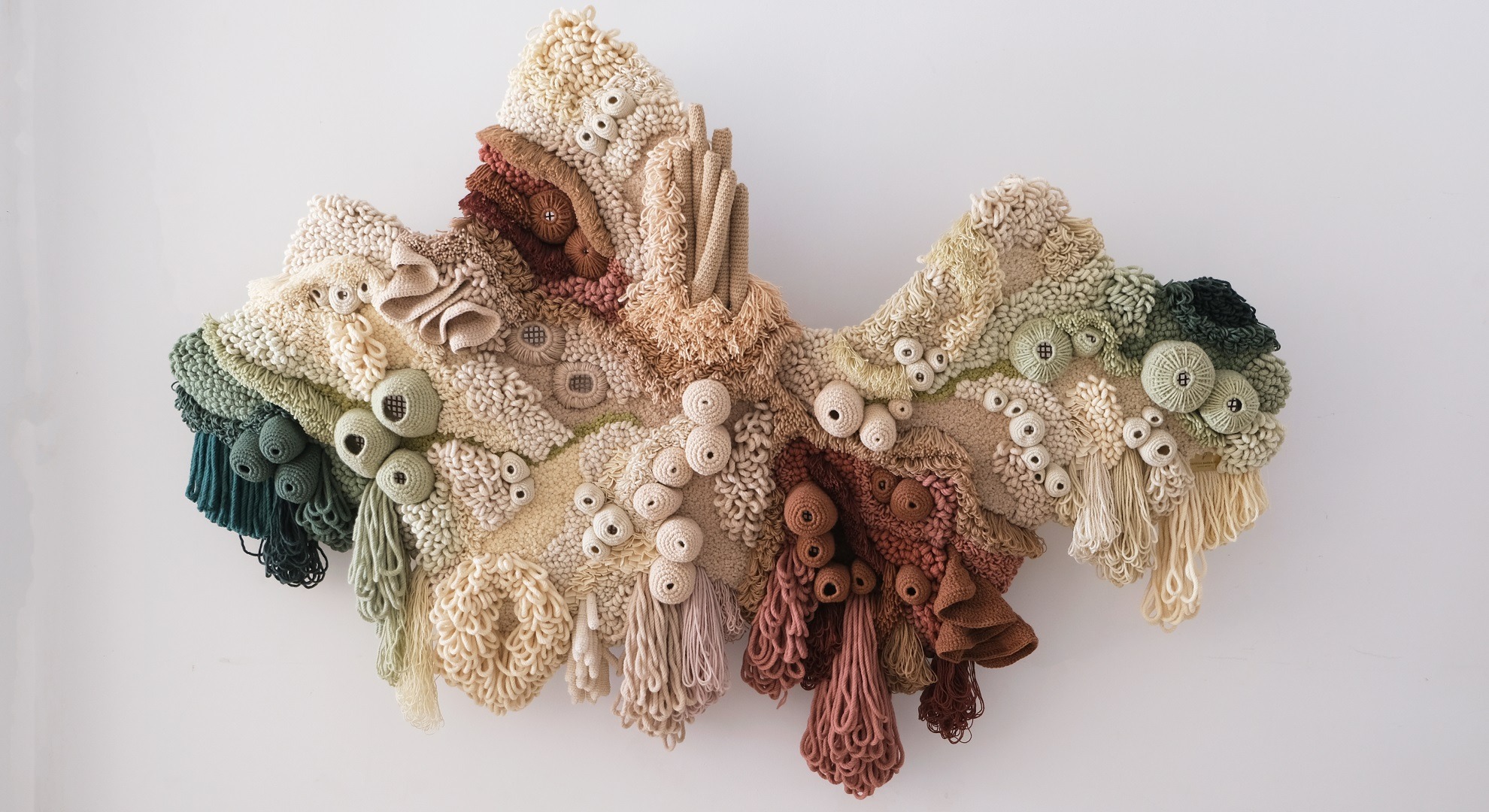
Vanessa Barragão is based in Albufeira, Portugal. She has exhibited in many group shows and completed multiple commissions. Her Botanical Tapestry was unveiled at Heathrow Airport, London, UK in 2019. She is fully committed to only working with waste materials to create magnificent botanical and coral-inspired works.
Website: www.vanessabarragao.com
Instagram: @vanessabarragao_work
Facebook: facebook.com/vanessabarragaoartist
Julie Peppito
Thrifting activist
Julie Peppito shopped at the Salvation Army and other thrift stores as a teen, both out of necessity and because it was fashionable at the time. Poring over aisles of discarded toys, clothes and furniture, she wondered what made something ‘valuable’ and what made it ‘out of fashion?’ Why are clothes thrown away if they only have a hole or stain?
While she still shops at thrift shops, Julie’s neighbours and friends also like to contribute to her collection. She has also discovered great objects and textiles on the street.
Julie has been experimenting with ways to make herself and others look at old things with new appreciation. She celebrates every object’s history and loves to smash and sew them all together. Their narratives of place, time and use are woven together as she considers who made them and how they were used. Julie’s hybrid forms serve as metaphors for the way we connect to ourselves, to each other and to the planet.
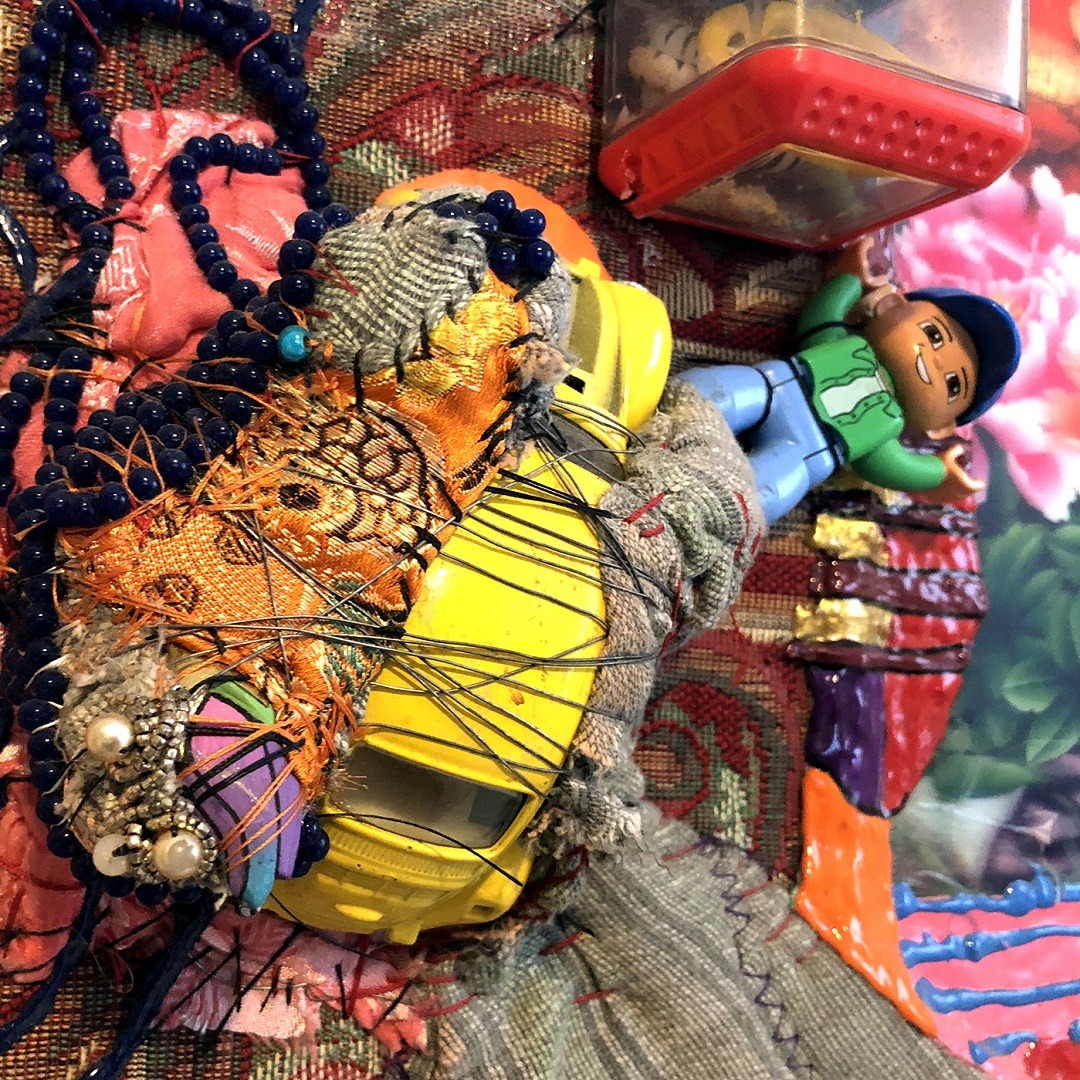
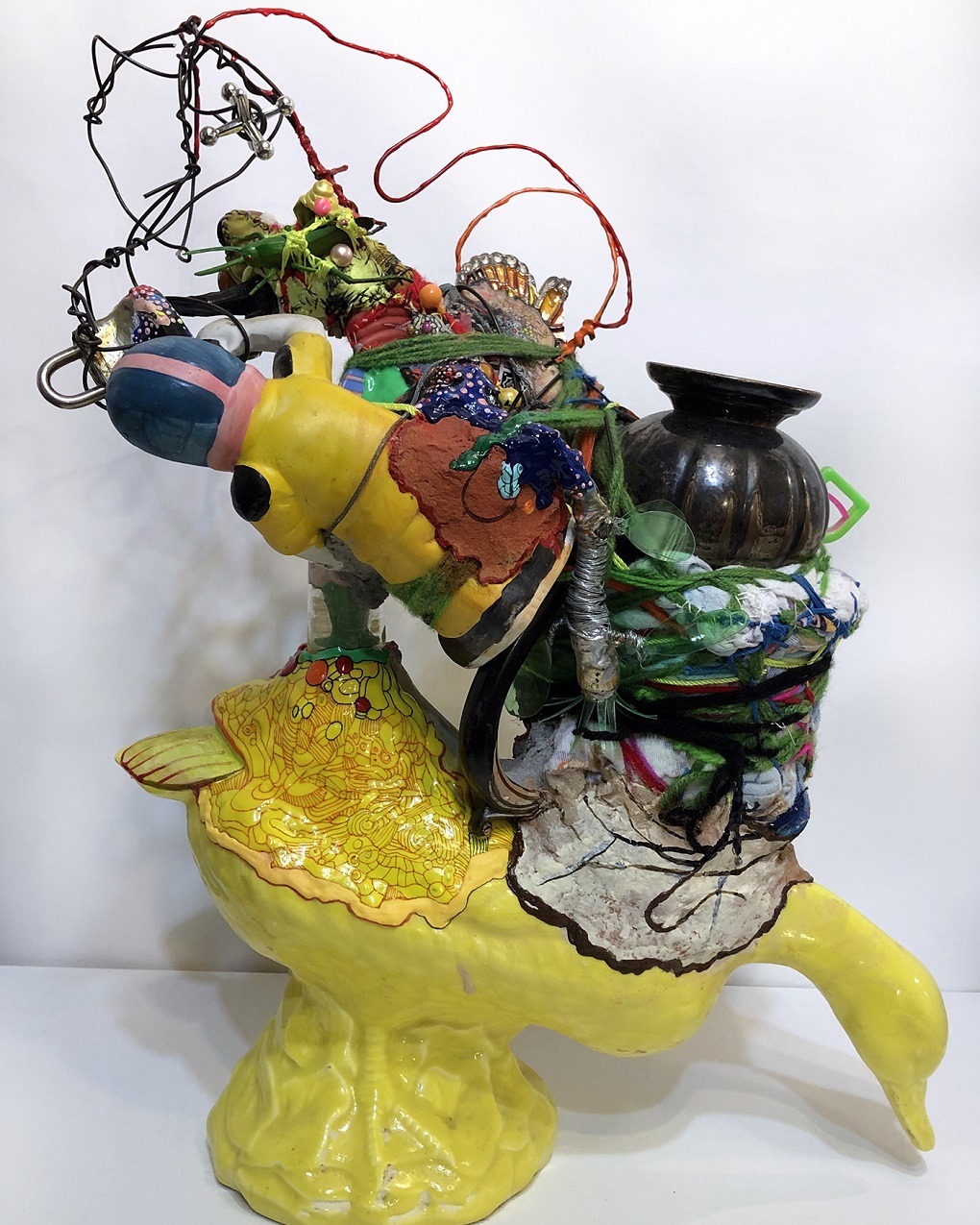
Julie’s creative process is quite unique. Often, she just sweeps up piles of trash off the floor and glues it onto a canvas. She then embellishes the work with any and all materials, including embroidered imagery, sewn-together toy cars, cutlery, hand-painted patterns and life drawings. Julie starts with bins of objects containing items loosely organised by size and kind, although over time they’ve become mixed up. She then flips the bins’ items onto the floor.
‘In a random John Cage ‘philosophy of chance’ kind of a way, I dump the bins out and challenge myself to use what’s there. I love to combine brute force and energy with fine decorative details.’
Sometimes, Julie sews objects to old carpets or canvases. Other times, she wraps them all together with yard, wire or old electrical cords. To work out a composition, she pins items next to one another to see if the story feels right. She then stitches everything together, and then adds more!
One of Julie’s top tips for artists wanting to use recycled materials is to look through your materials and see if you can replace any of your store-bought materials with recycled materials. Start by viewing old things in terms of their colour, shape and form. How much stuff have you bought that you don’t need? What are the things that no one else would ever want?
Once you have a collection of items to recycle, challenge yourself to explore and use those materials in your work. Your goal is to make them desirable once again.
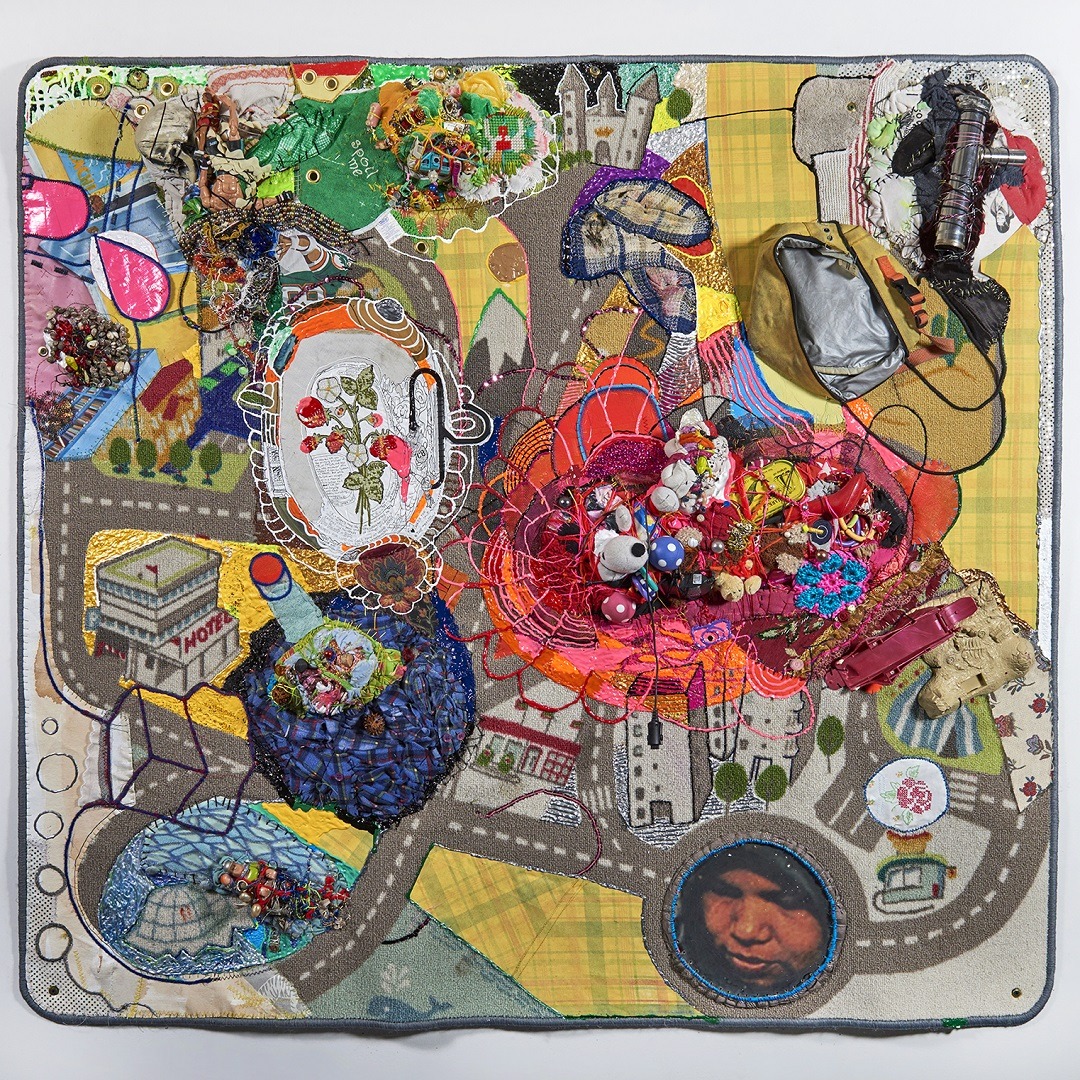
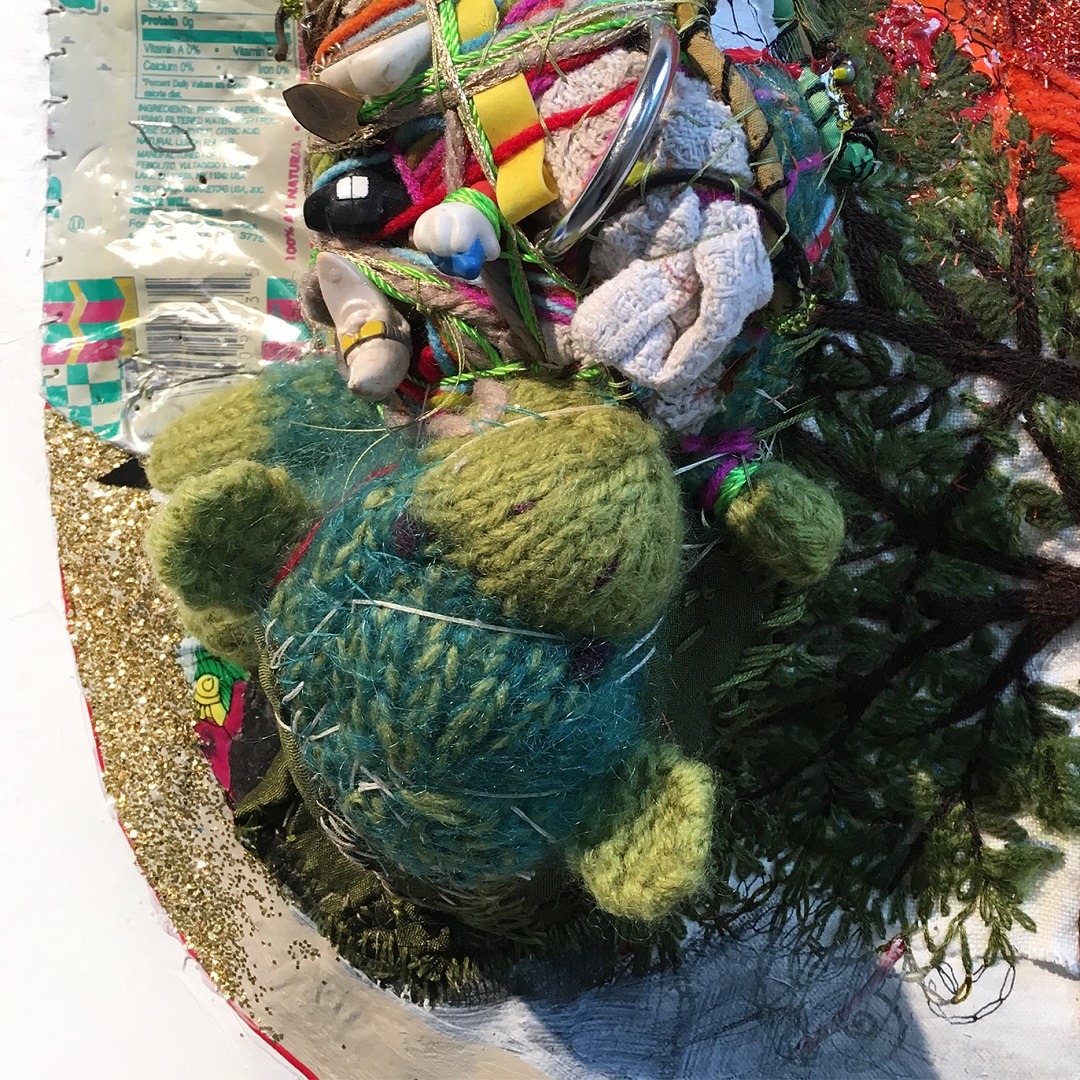
Julie is based in Brooklyn, New York (US). Her work has been featured at The Long Island Children’s Museum, Kentler International Drawing Space, Ethan Cohen Gallery and many other venues. She has received a New York Foundation for the Arts Fellowship in Sculpture and has made art for four New York City Park’s Department playgrounds.
Website: juliepeppito.com
Instagram: @juliepeppito
Facebook: facebook.com/Julie-Peppito
Elnaz Yazdani says rethinking beads is a great first step to explore recycled art. If you’re up for the challenge, check out Jessica Grady’s remarkable upcycled bead creations for more inspiration.
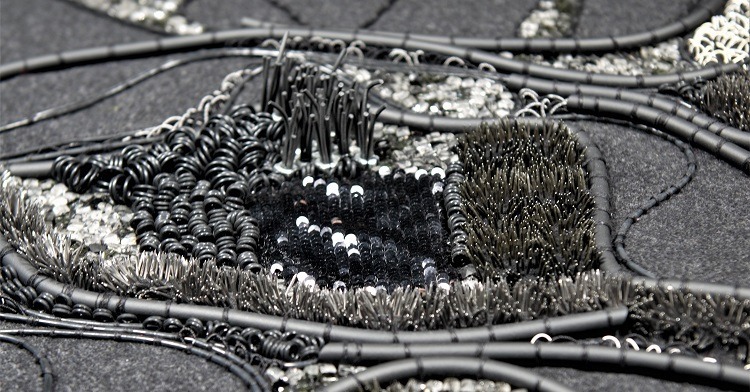
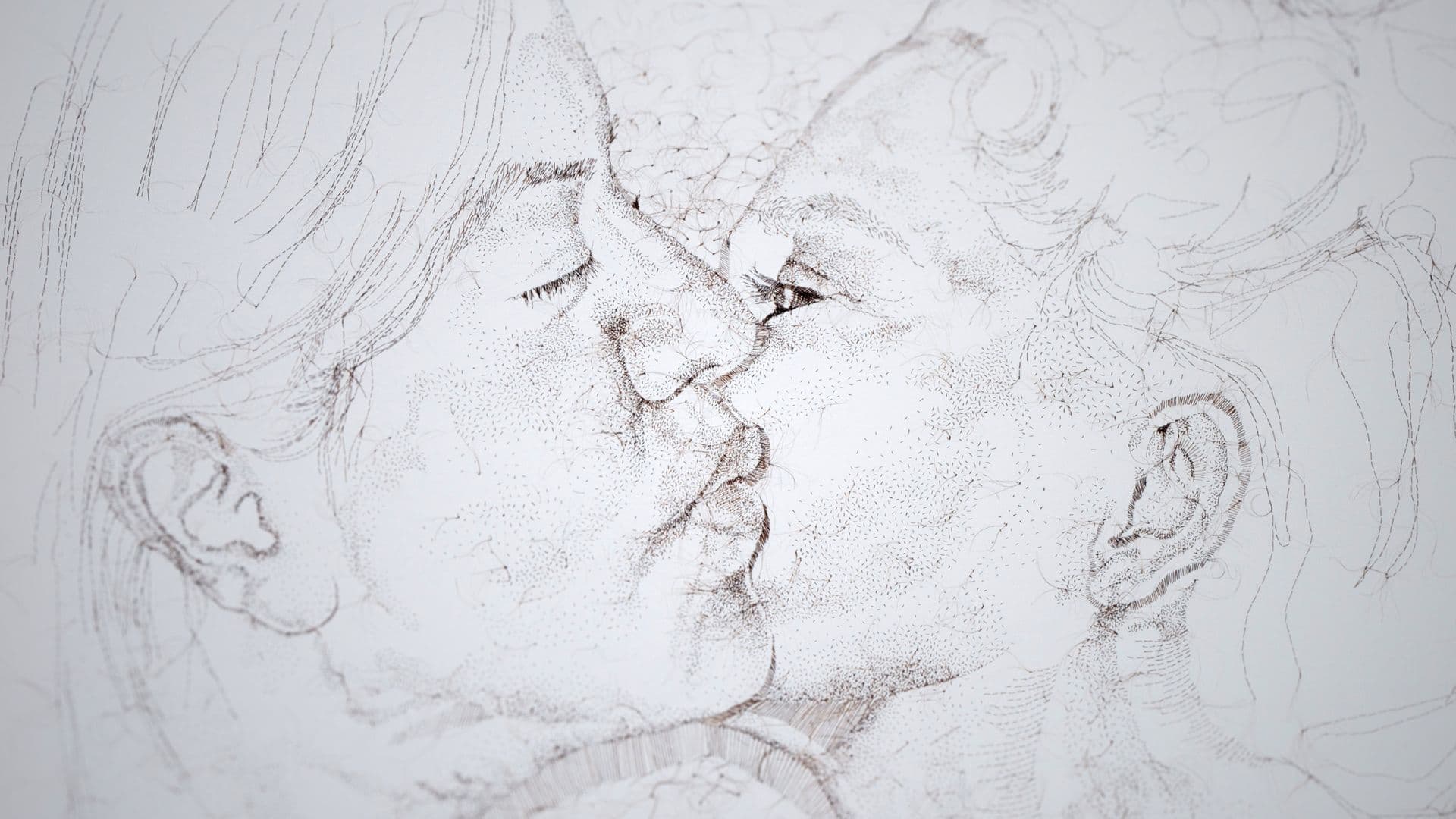
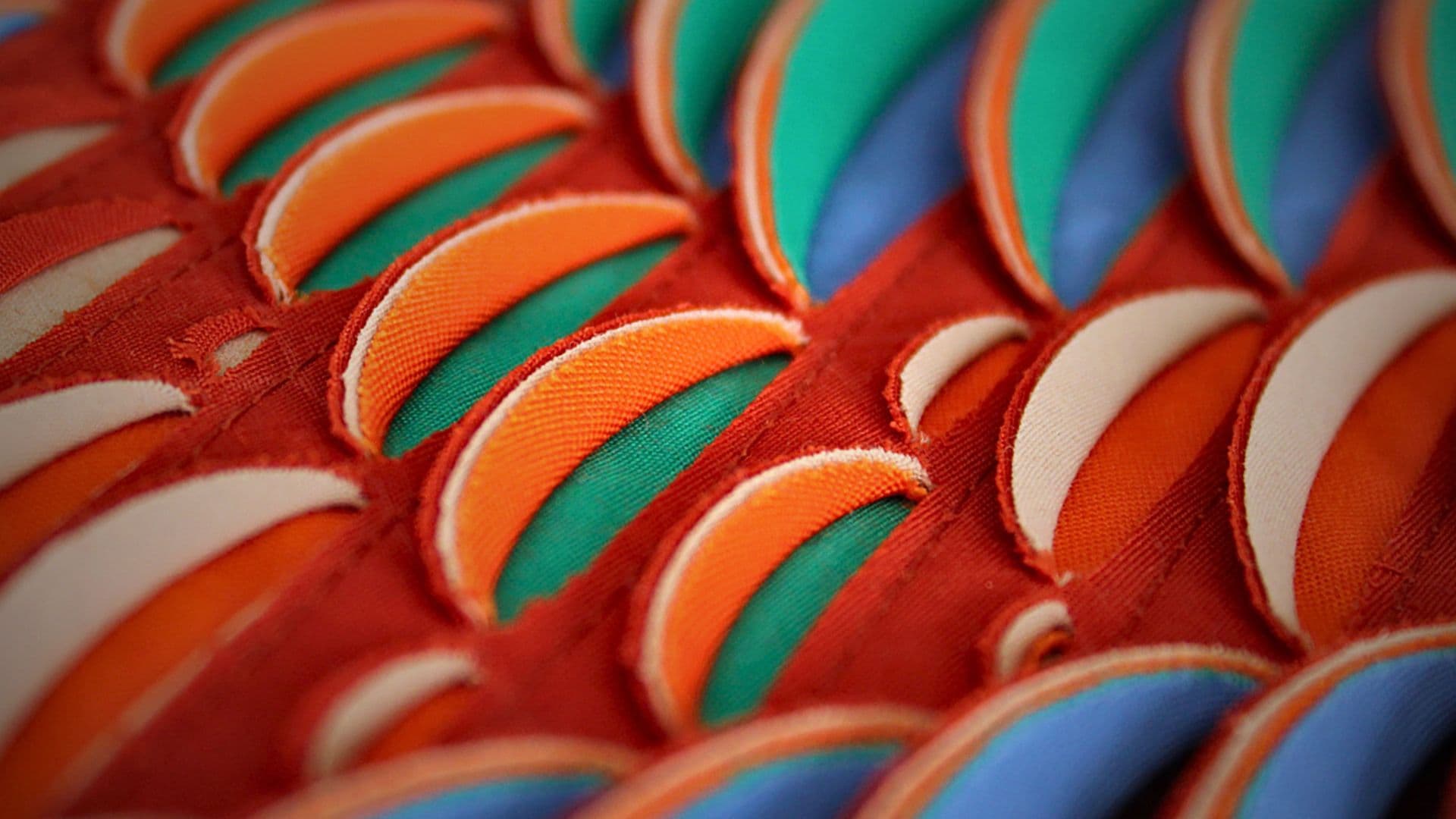
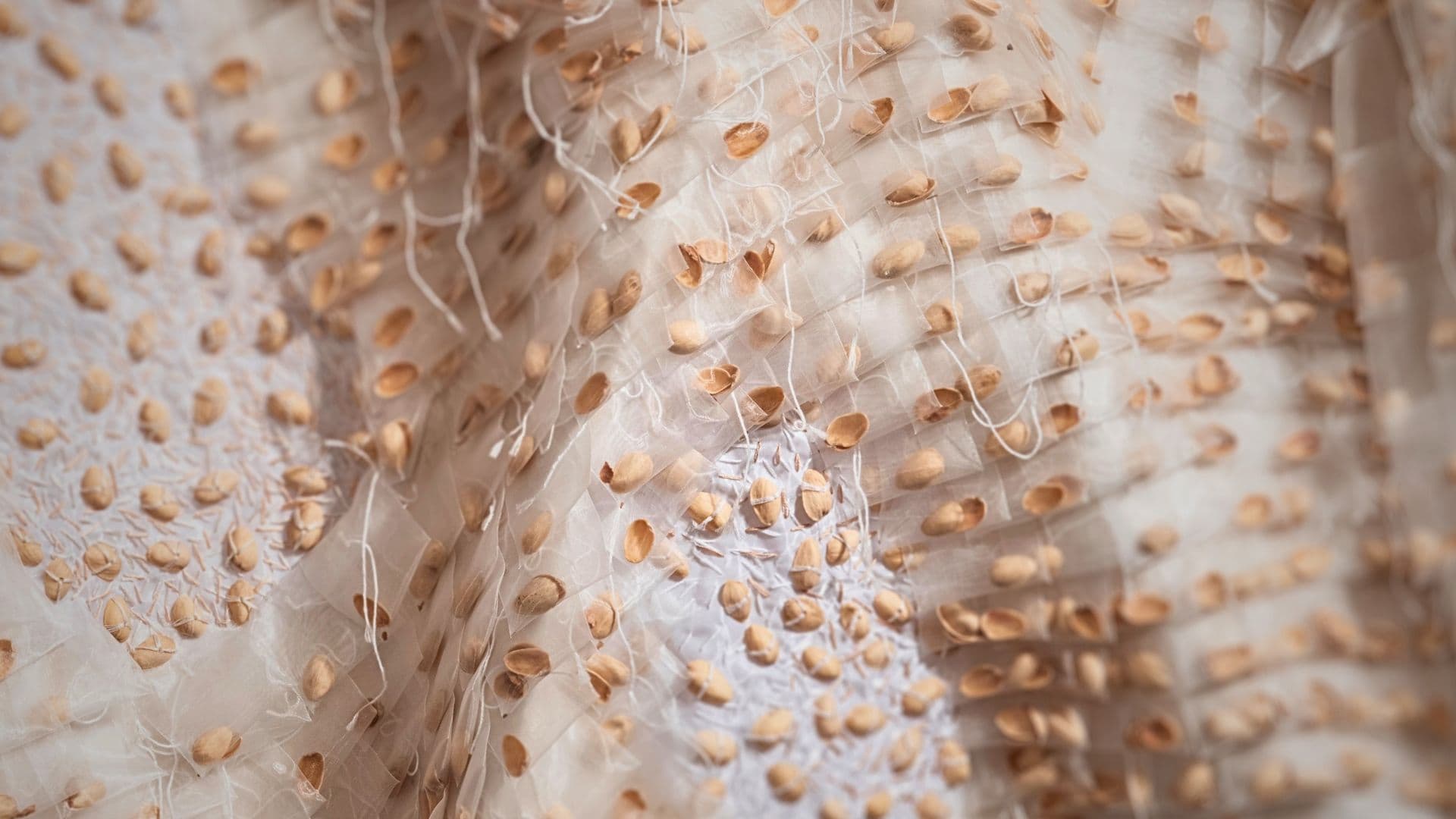
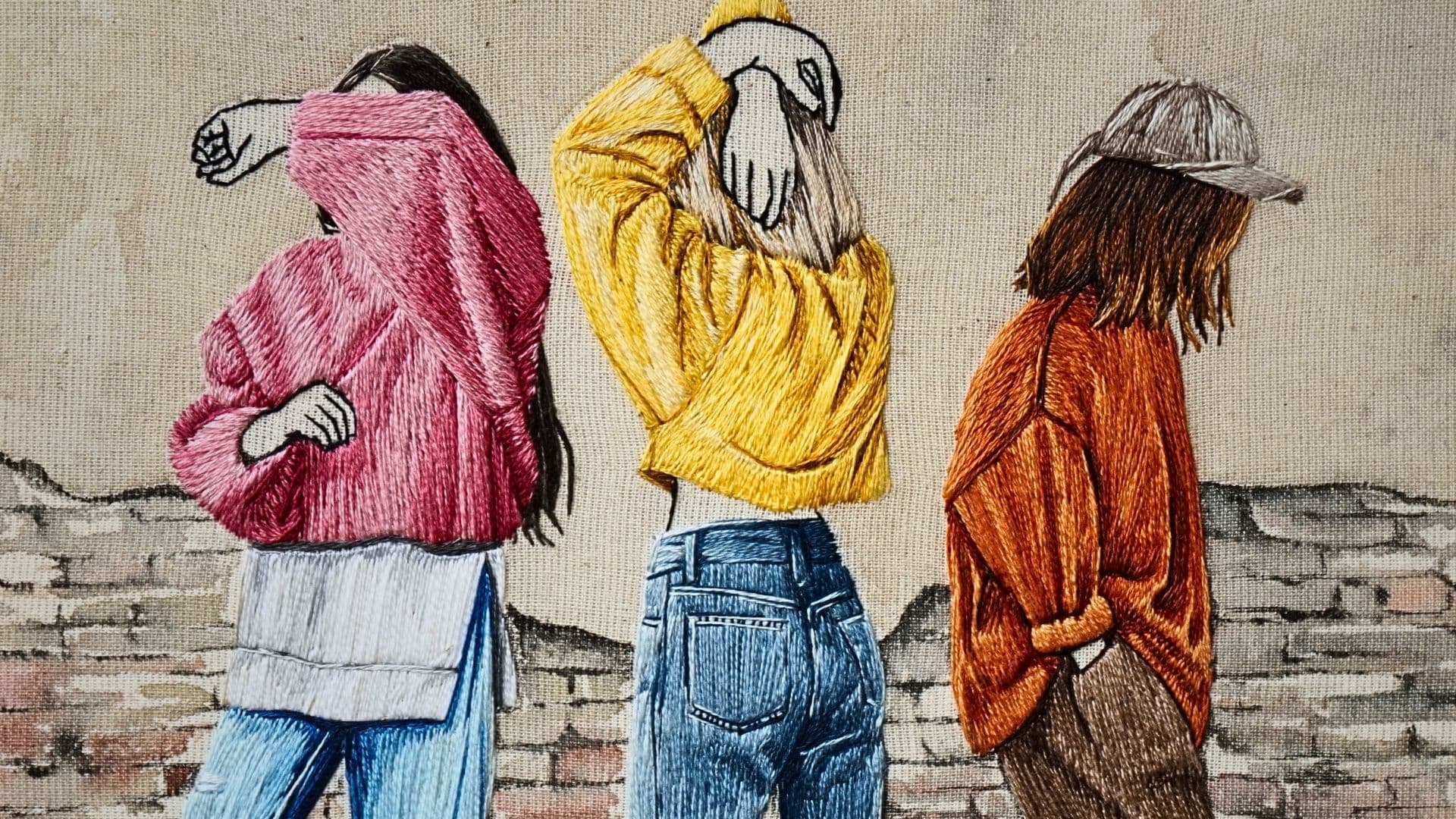
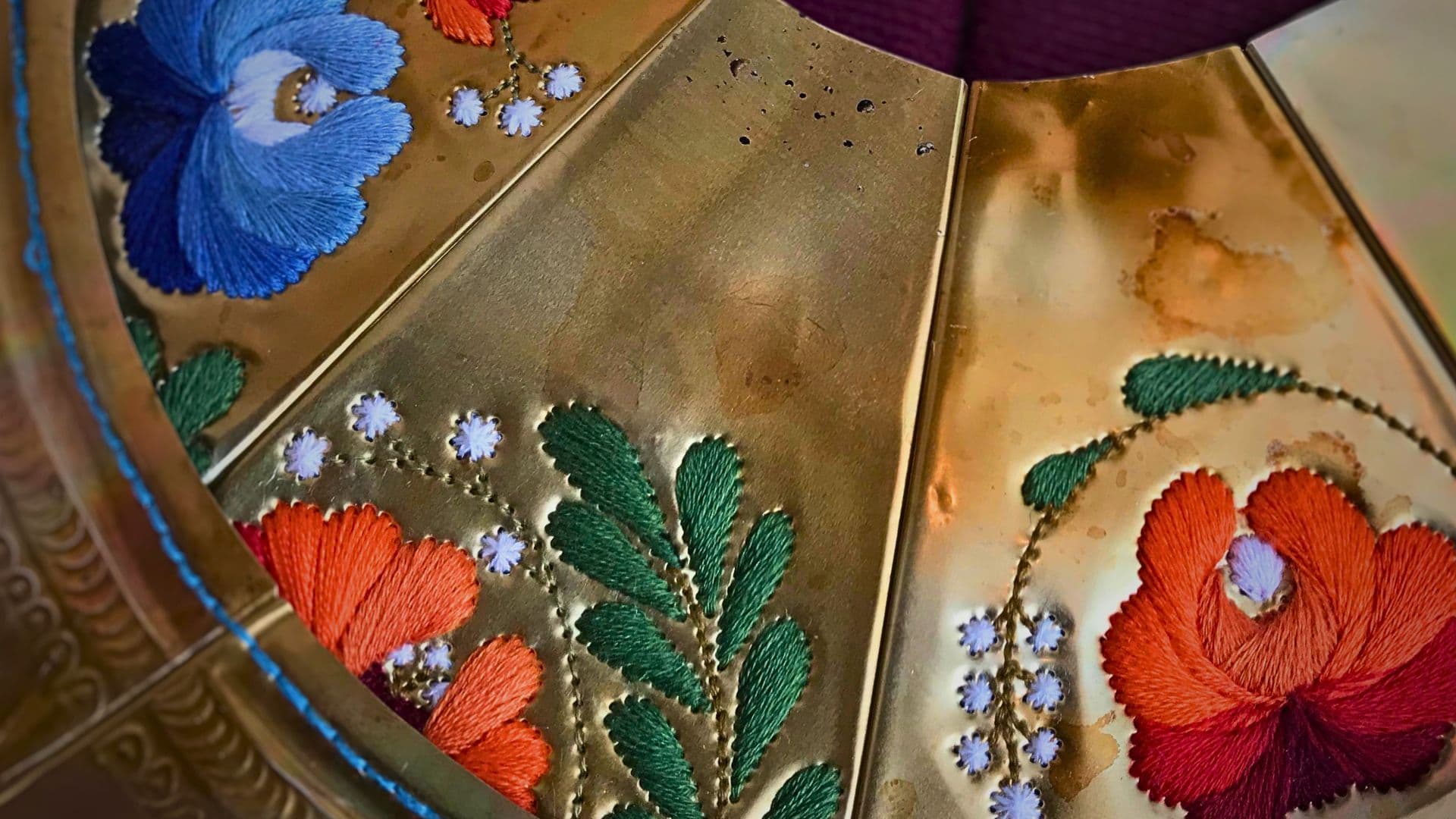
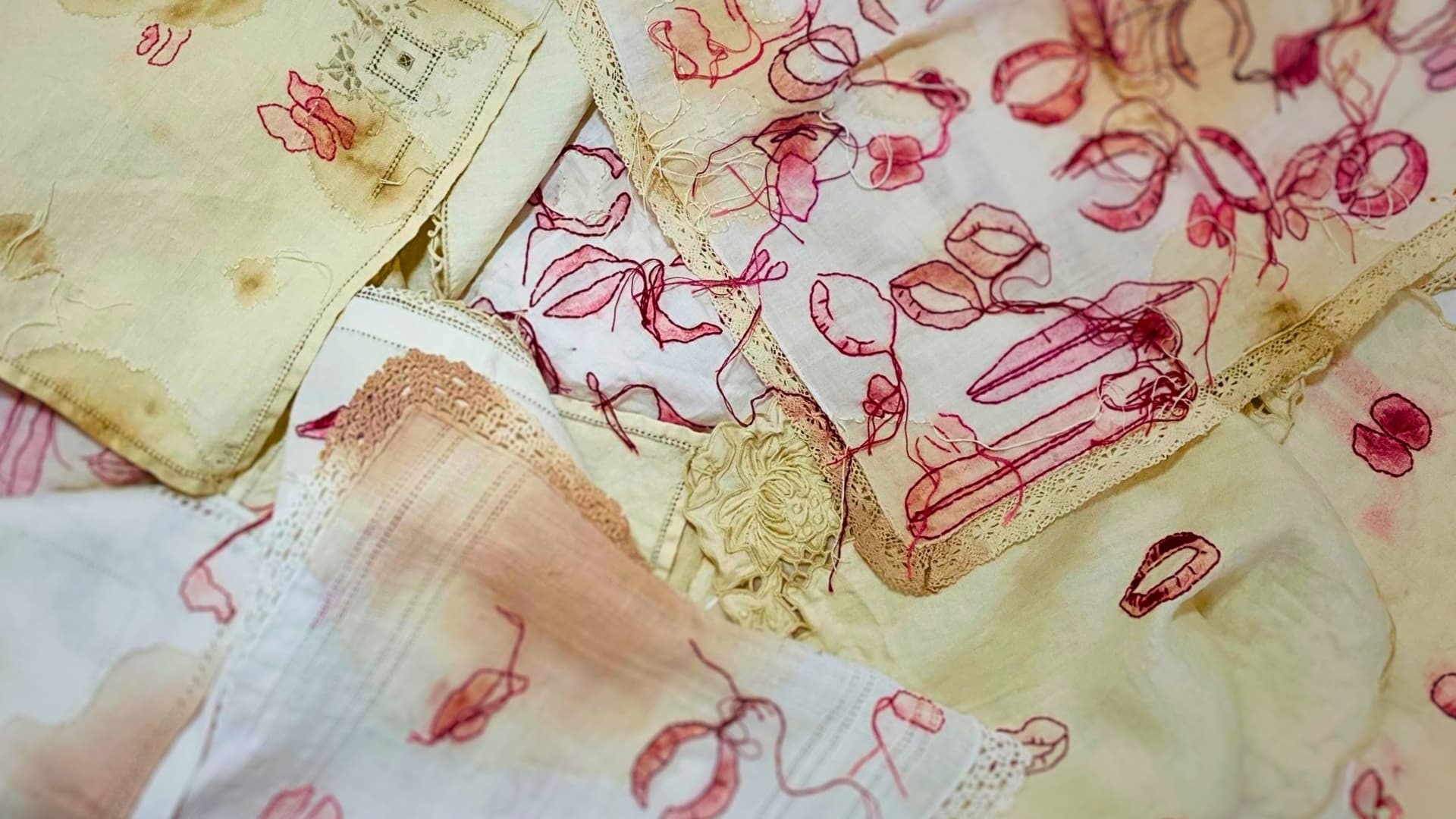
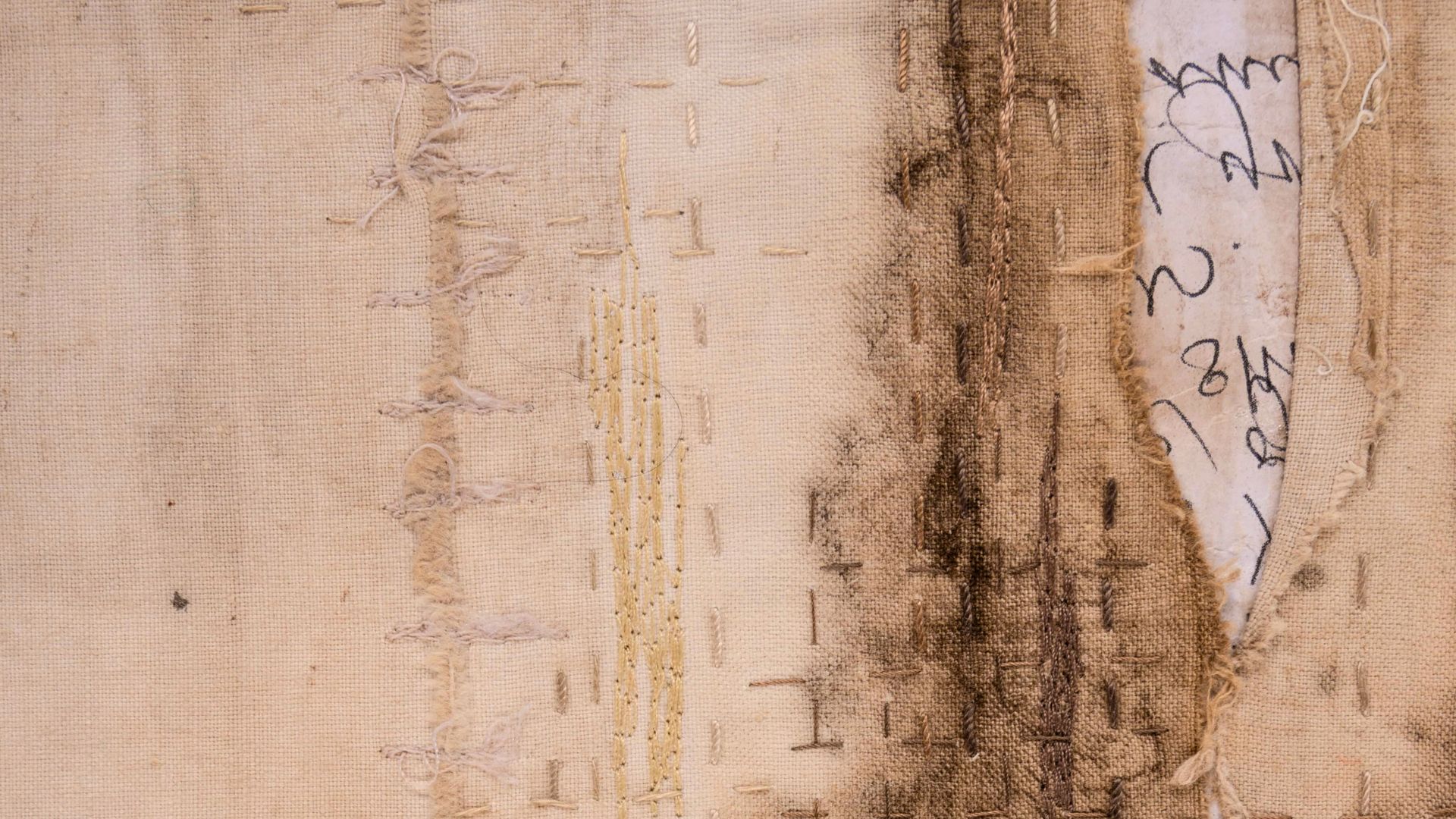
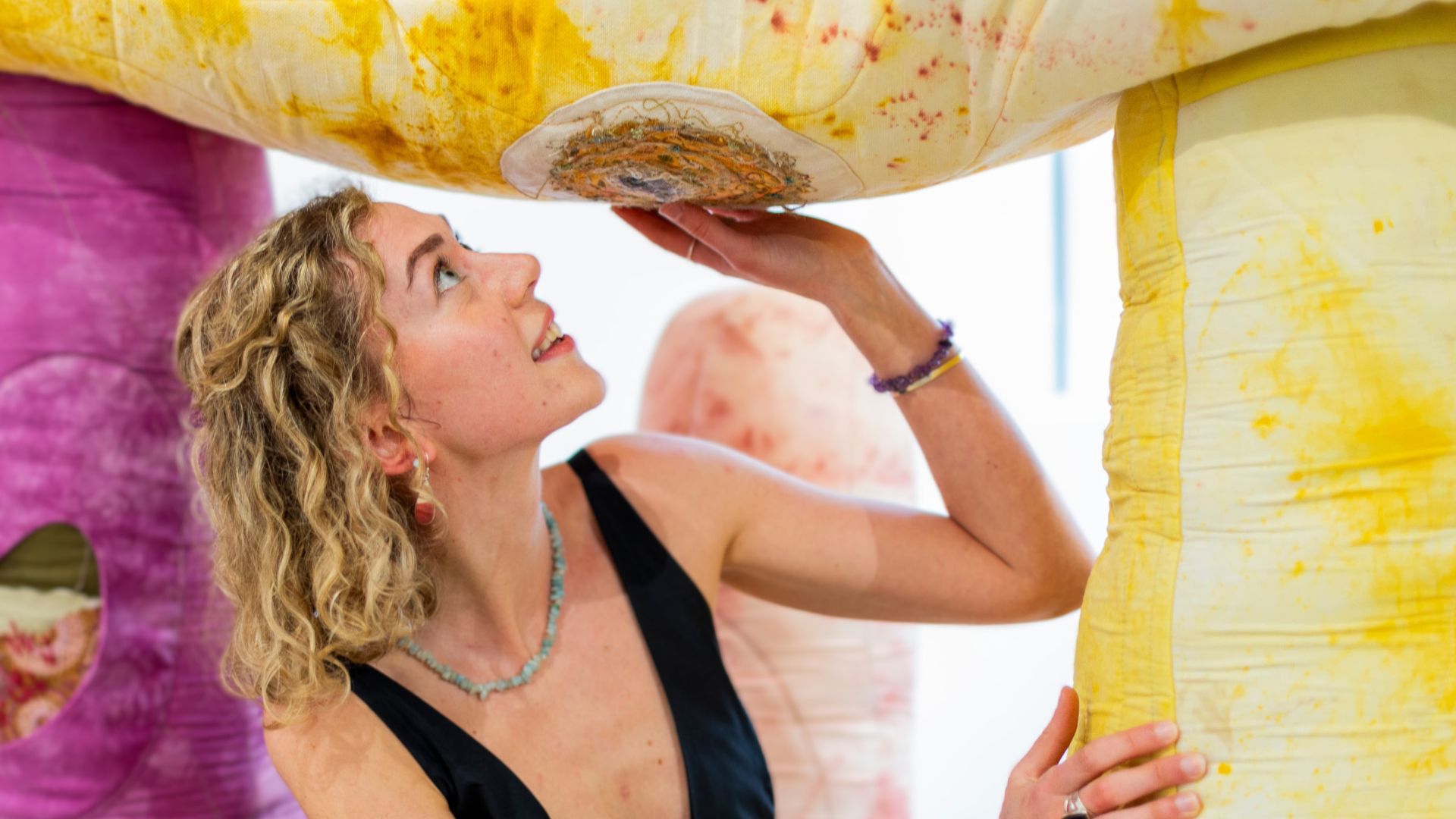
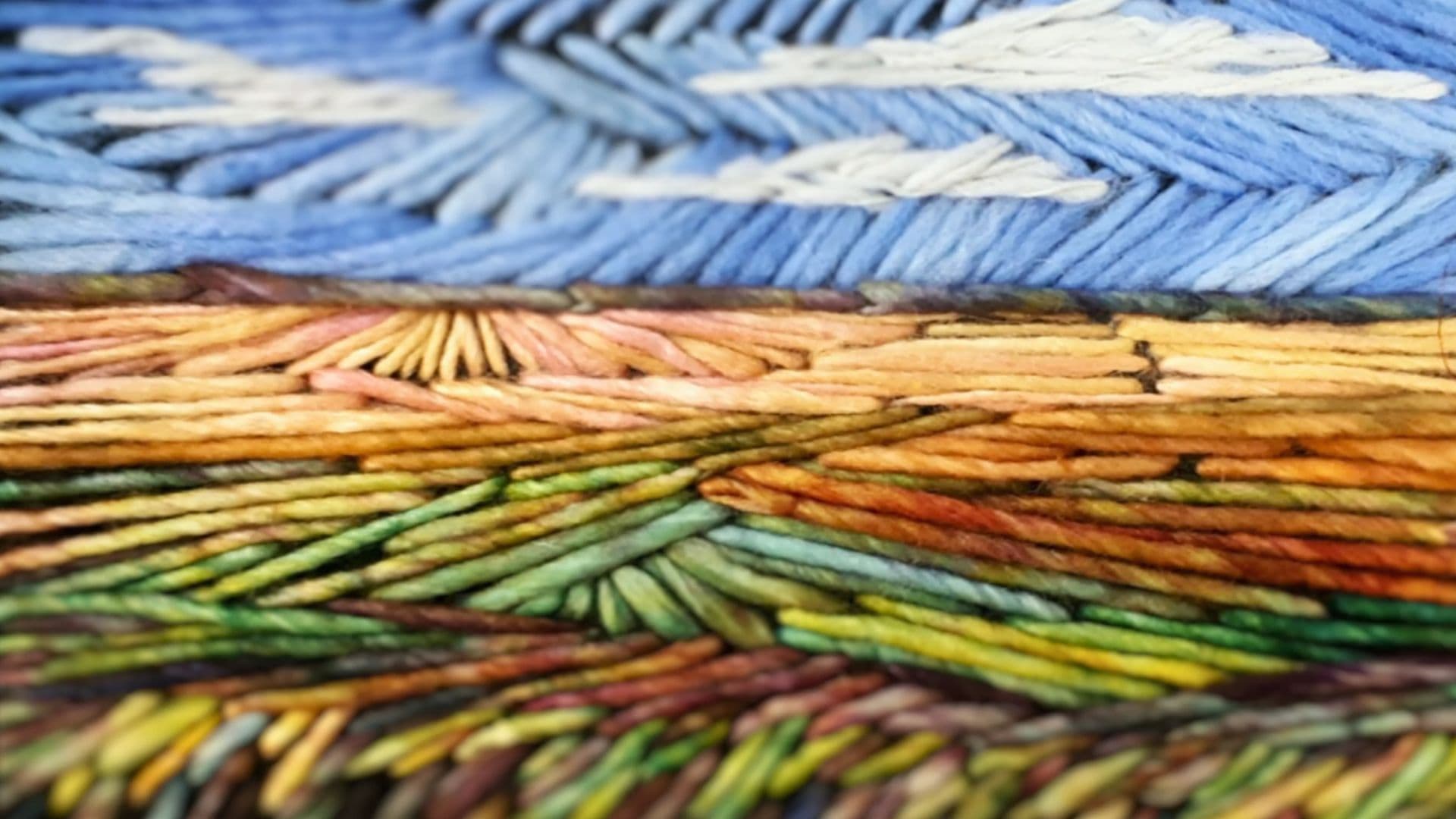
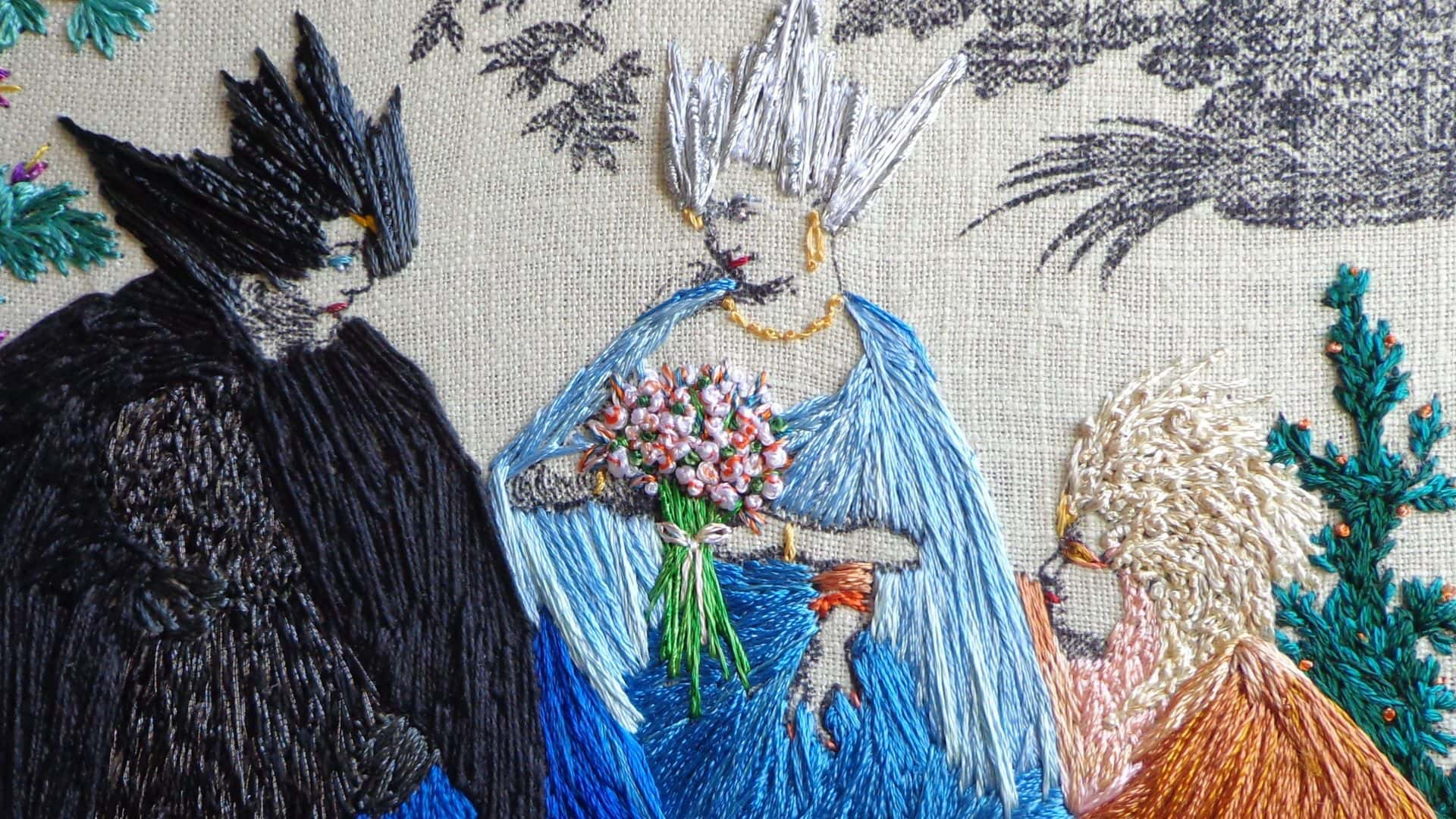
2 comments
Nakoli Norah
Keep up, I love your artwork